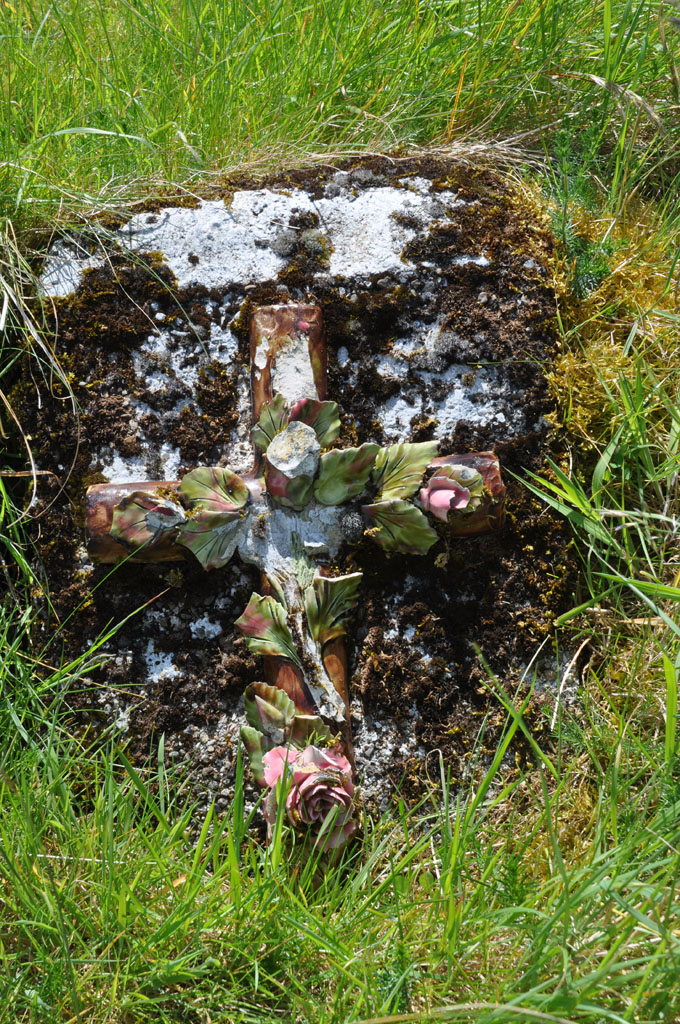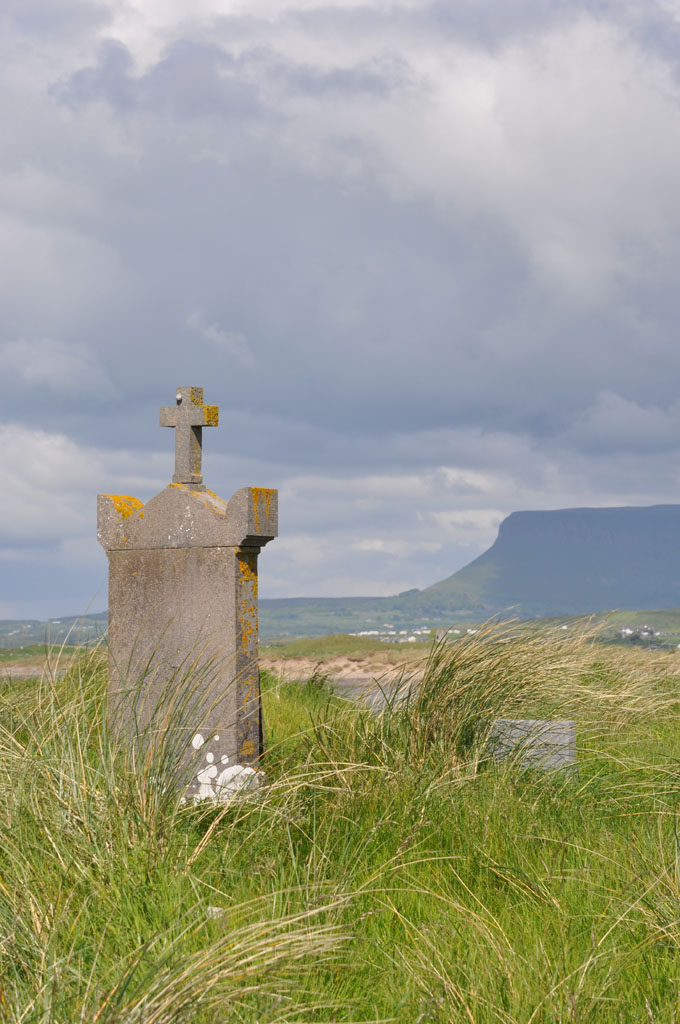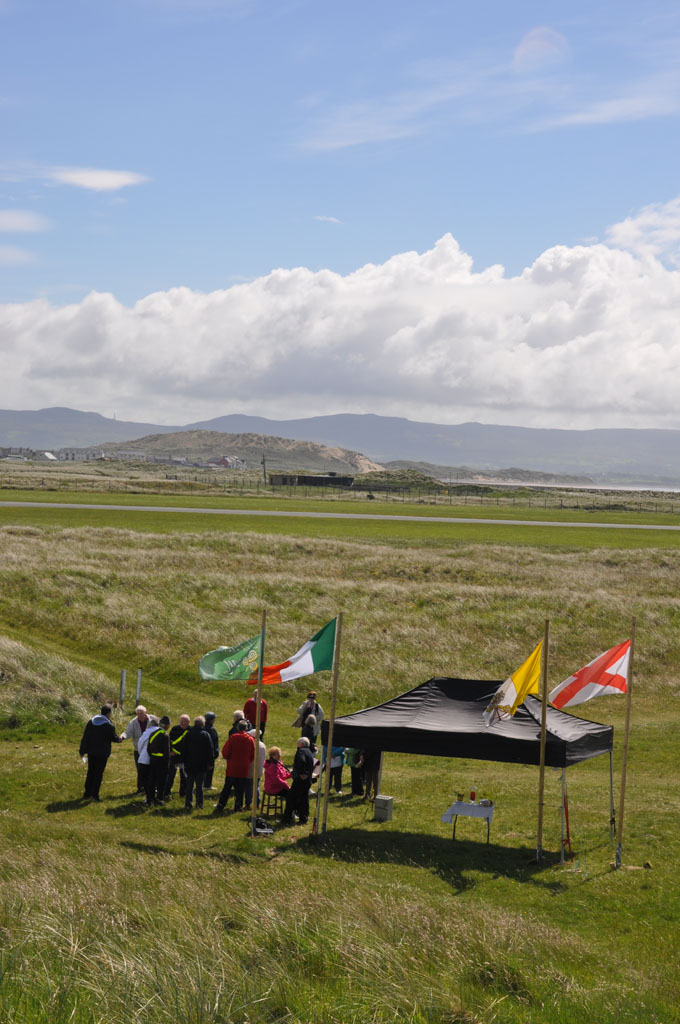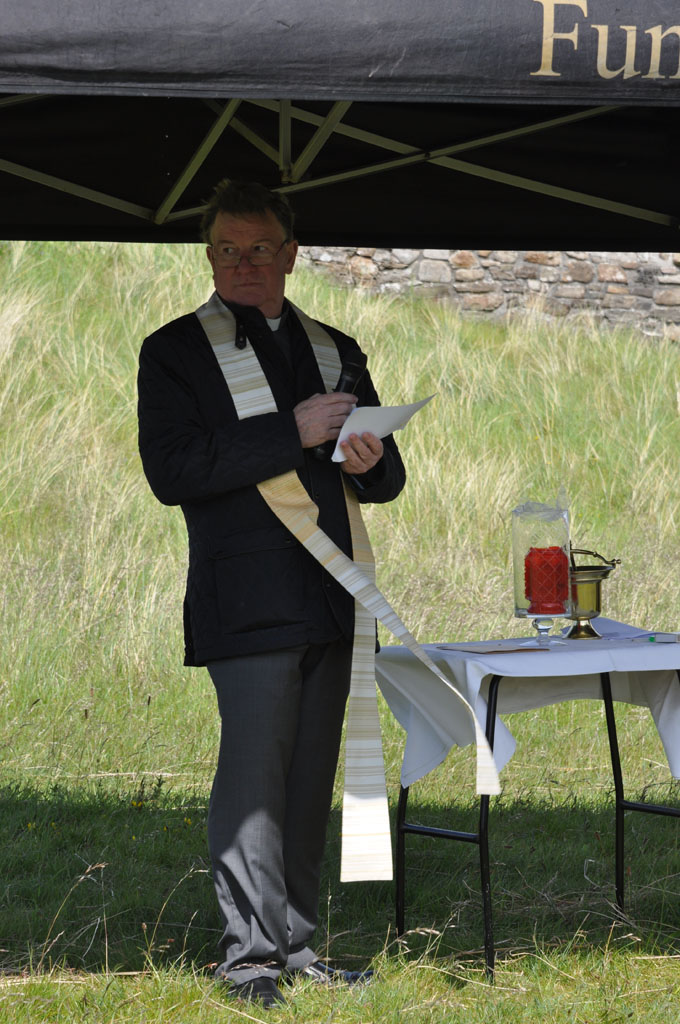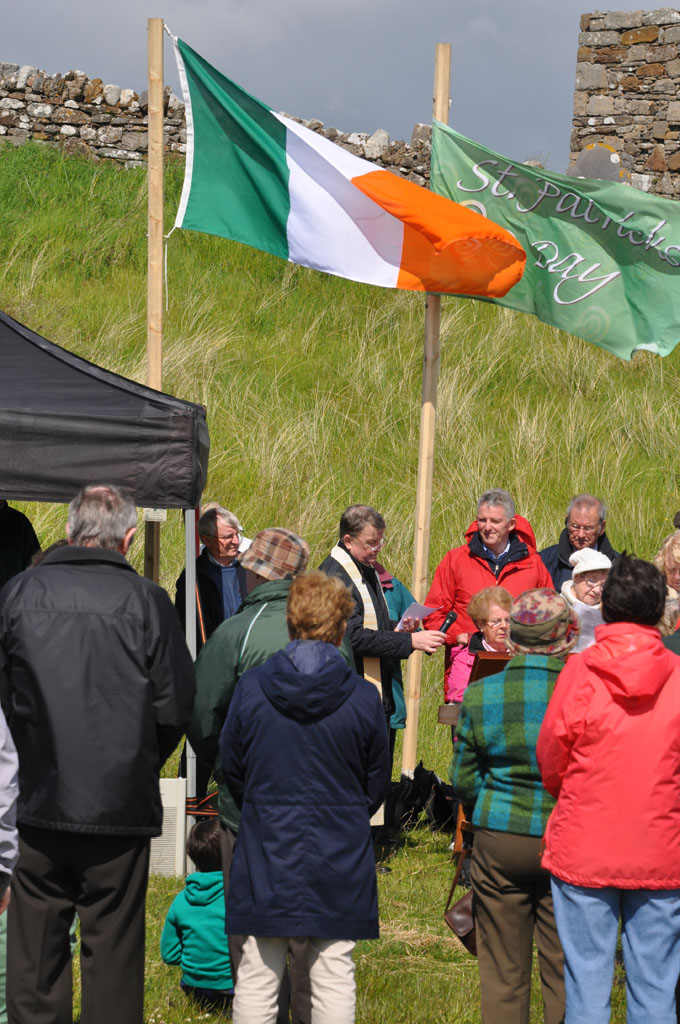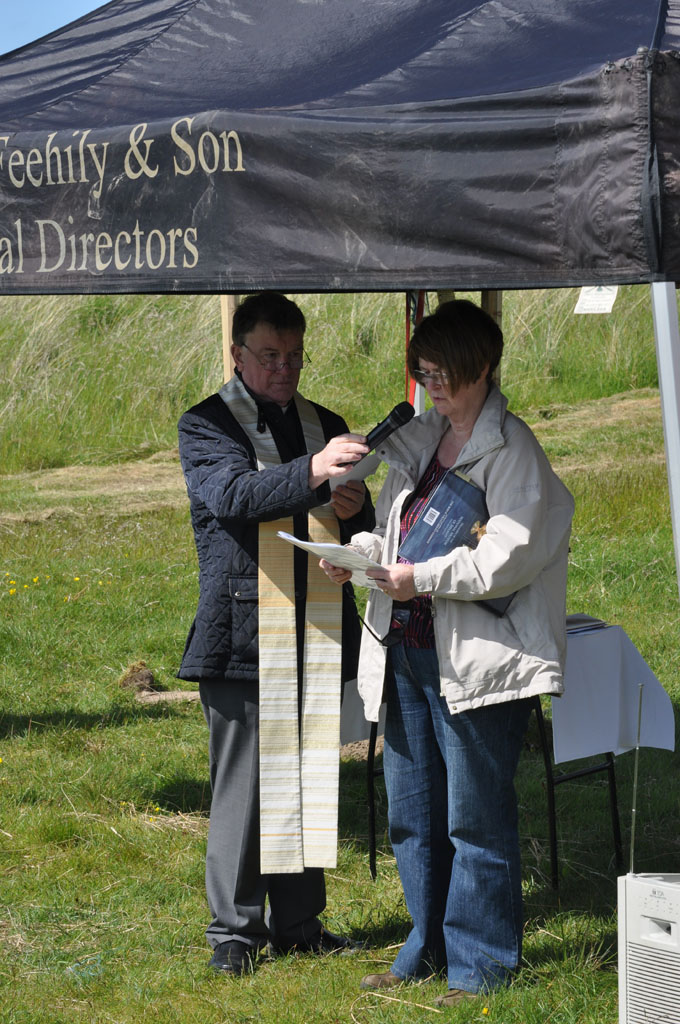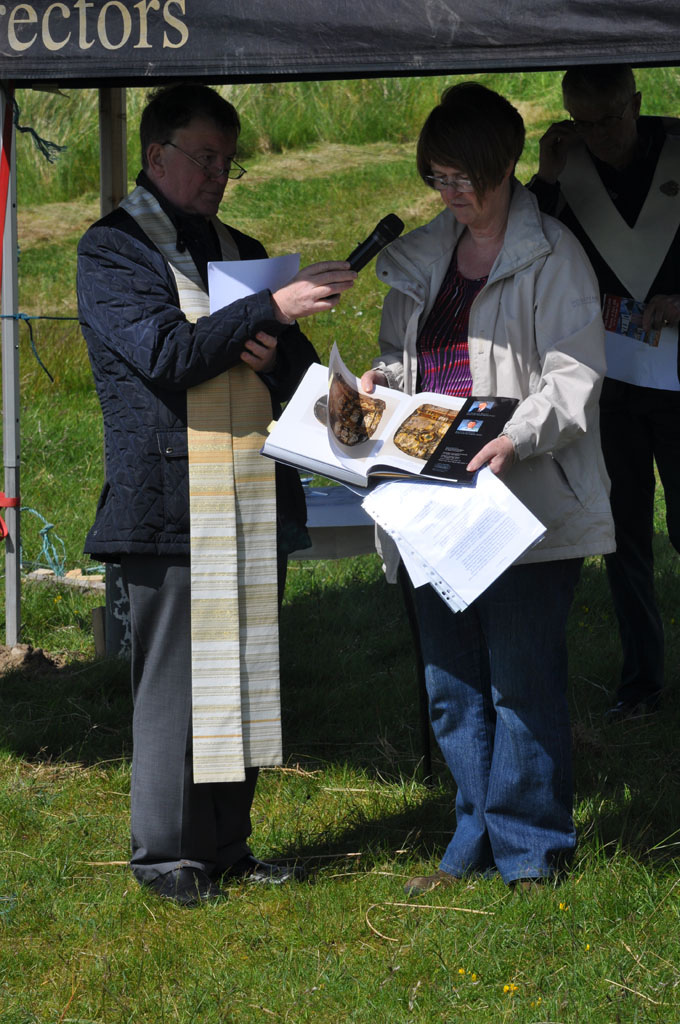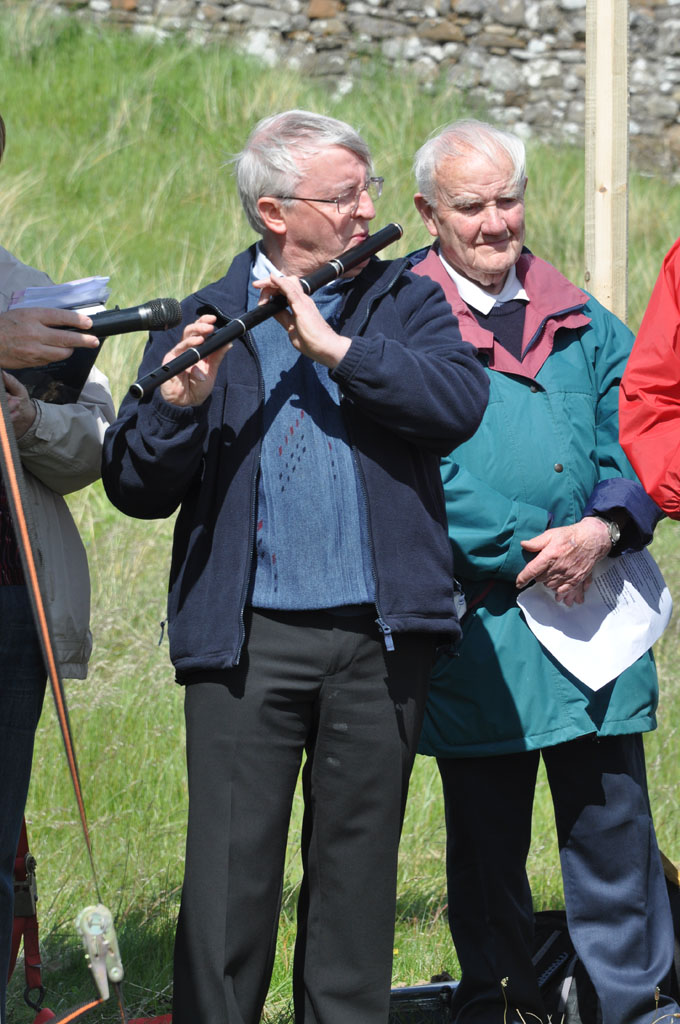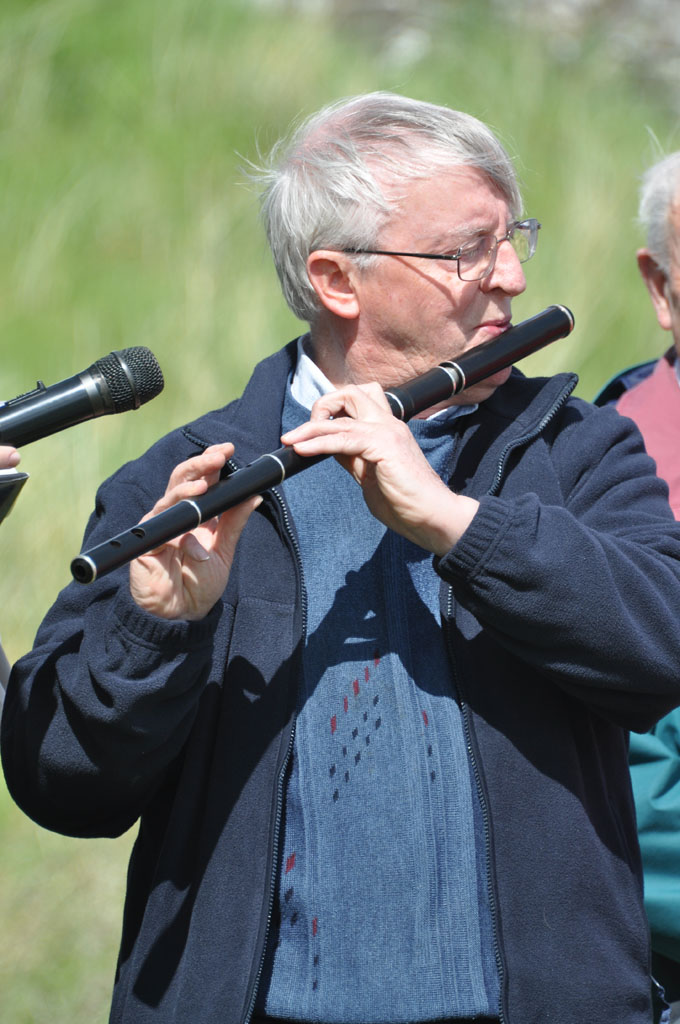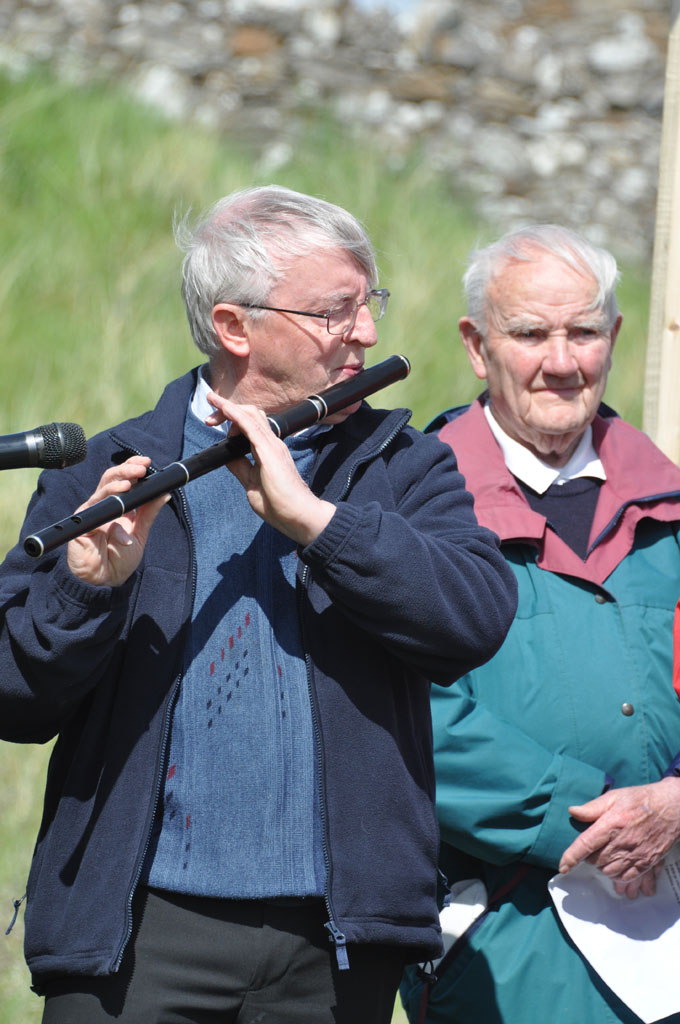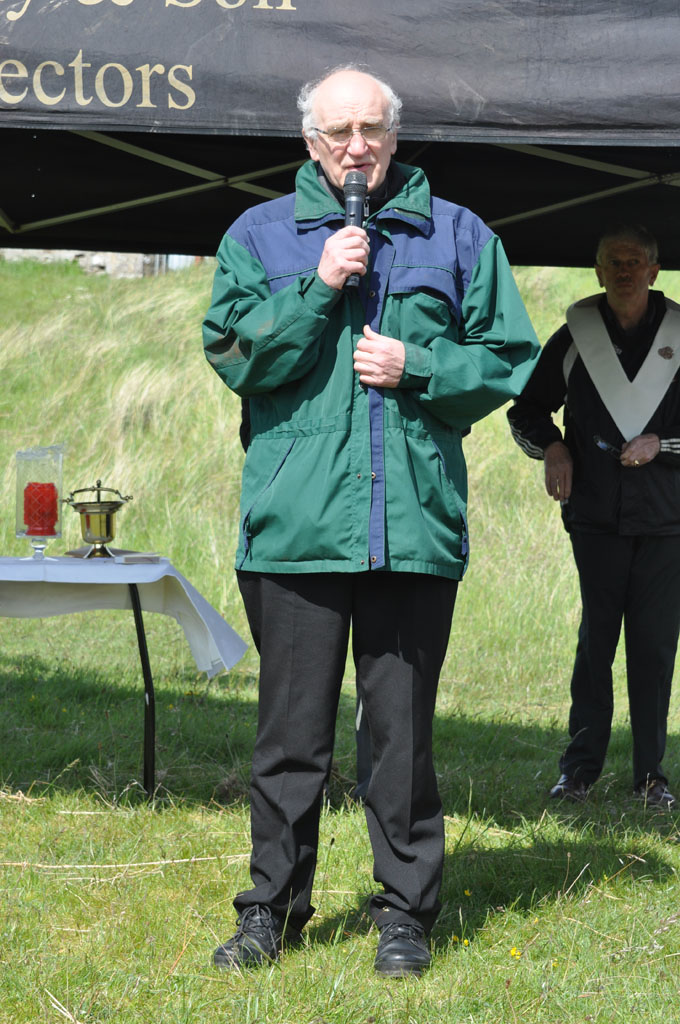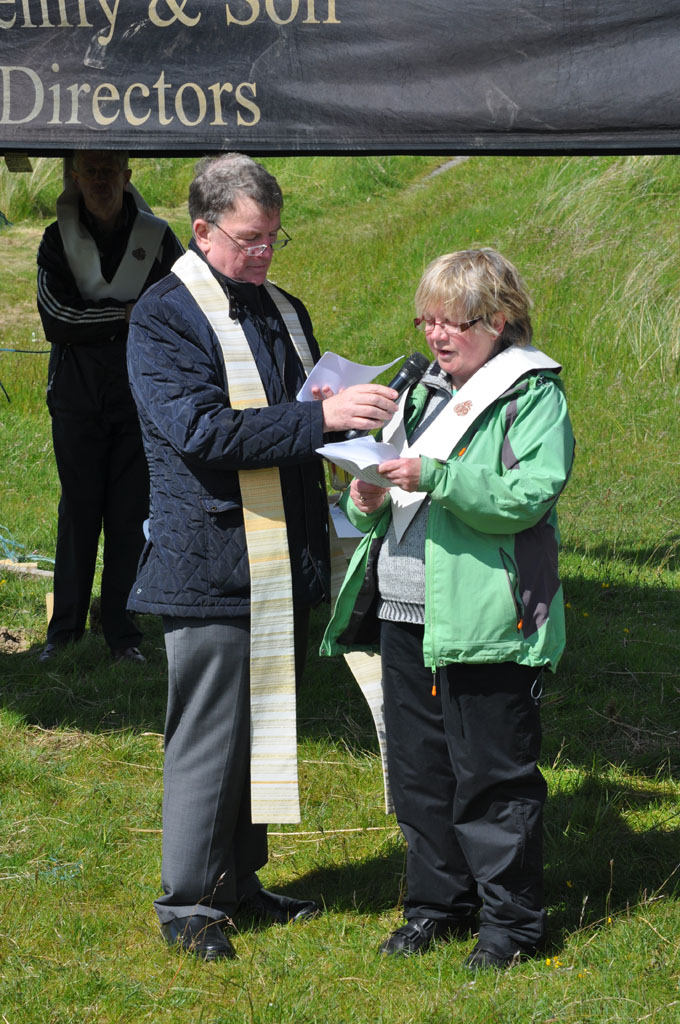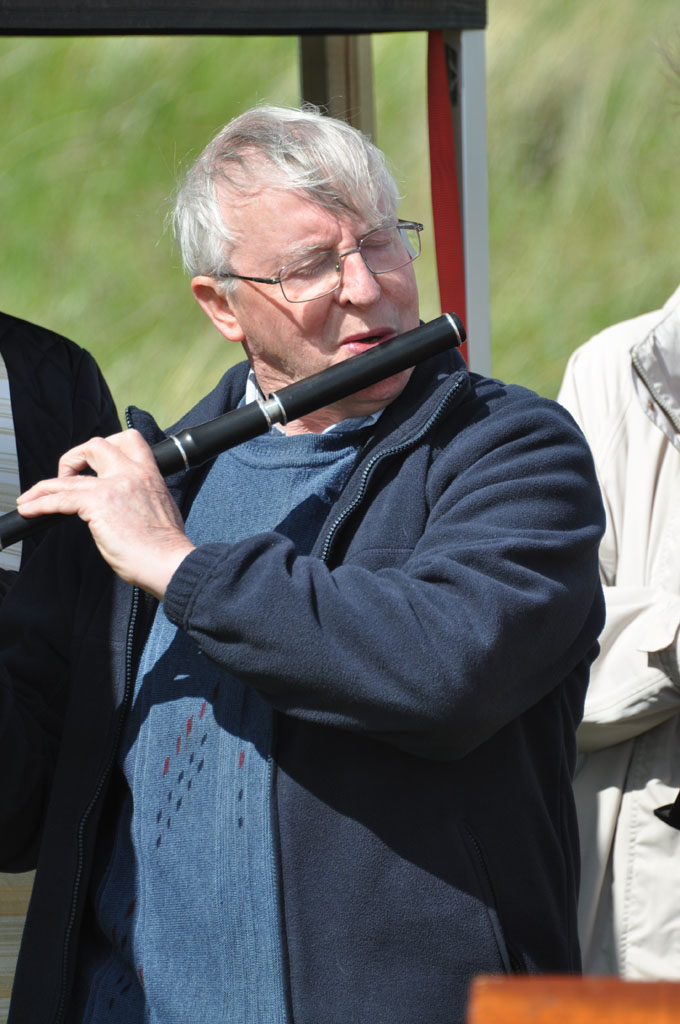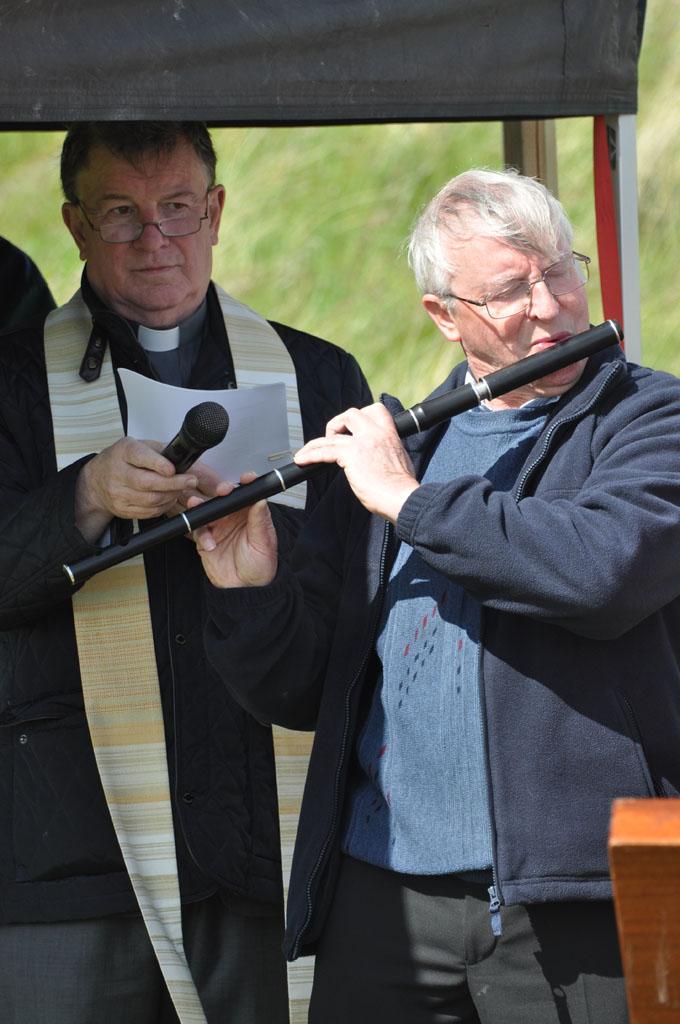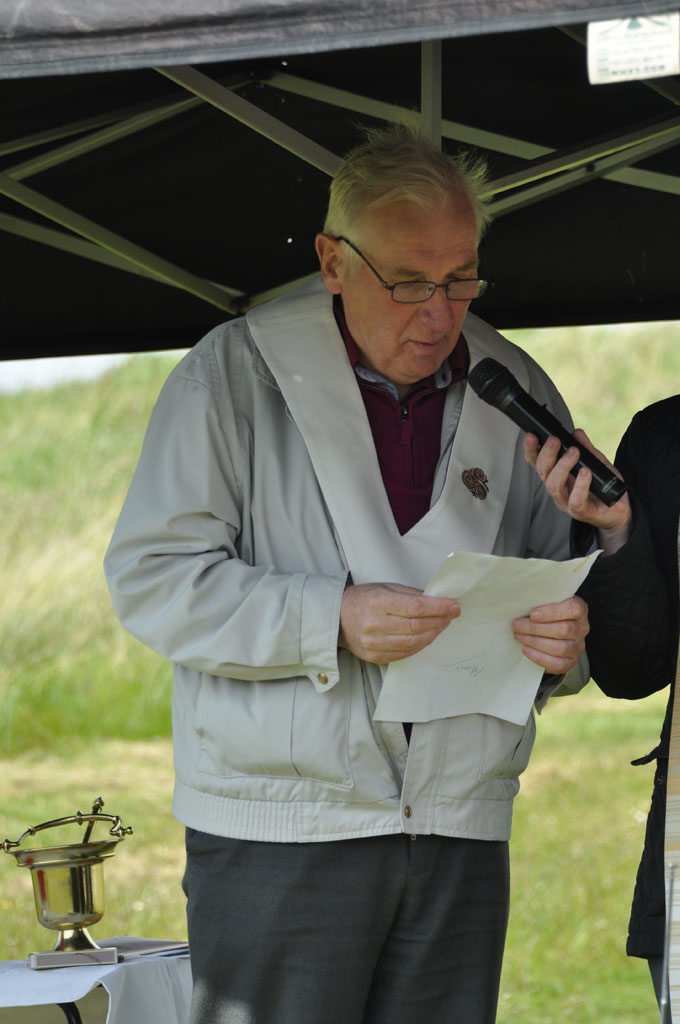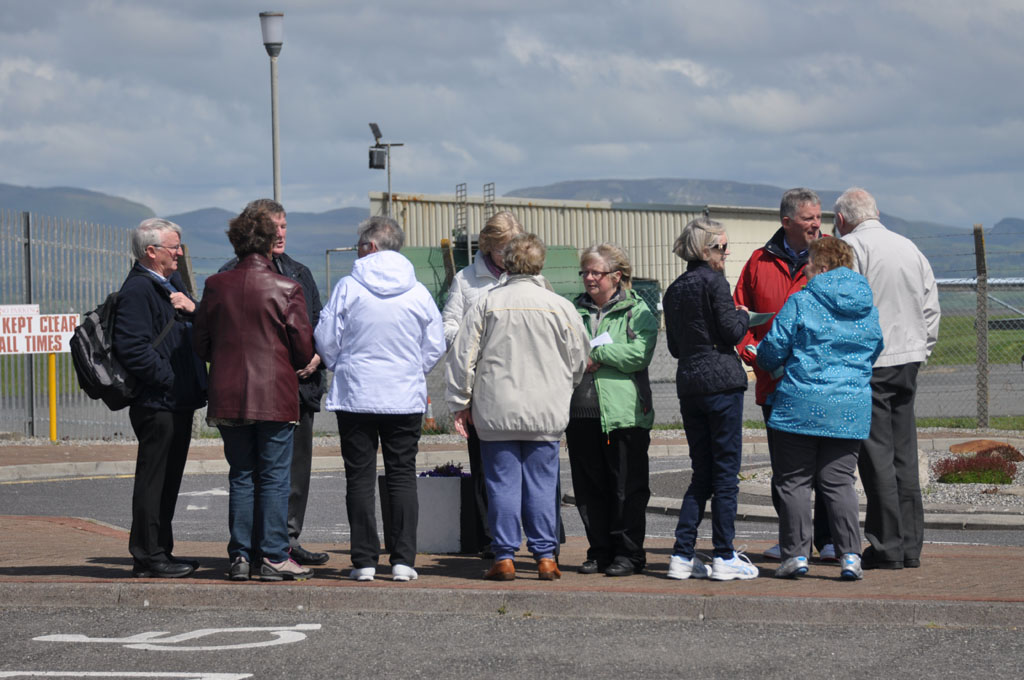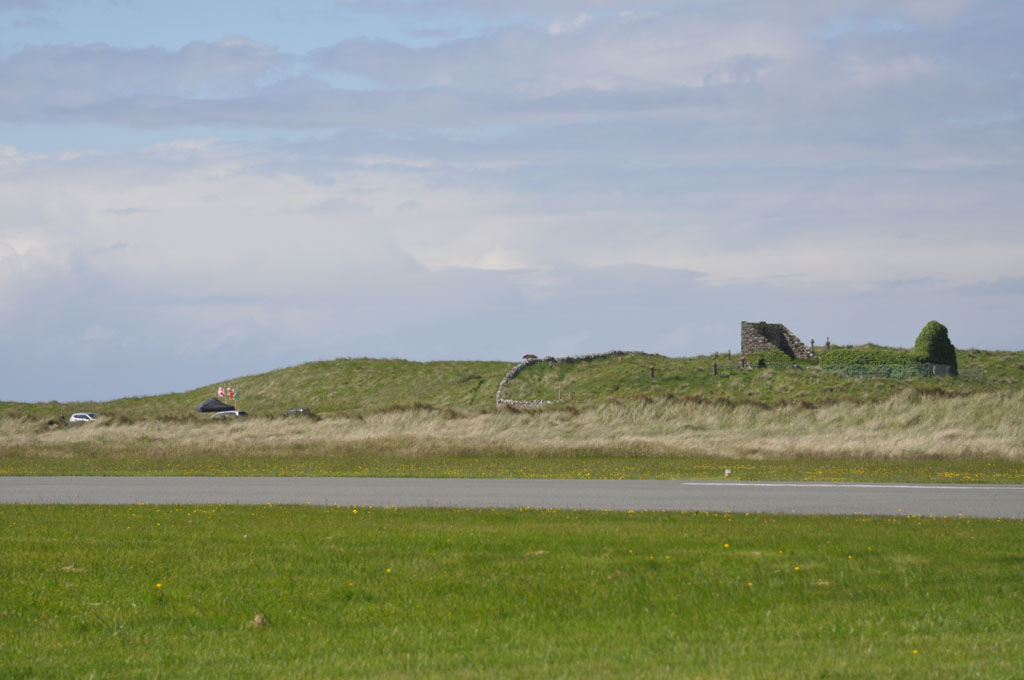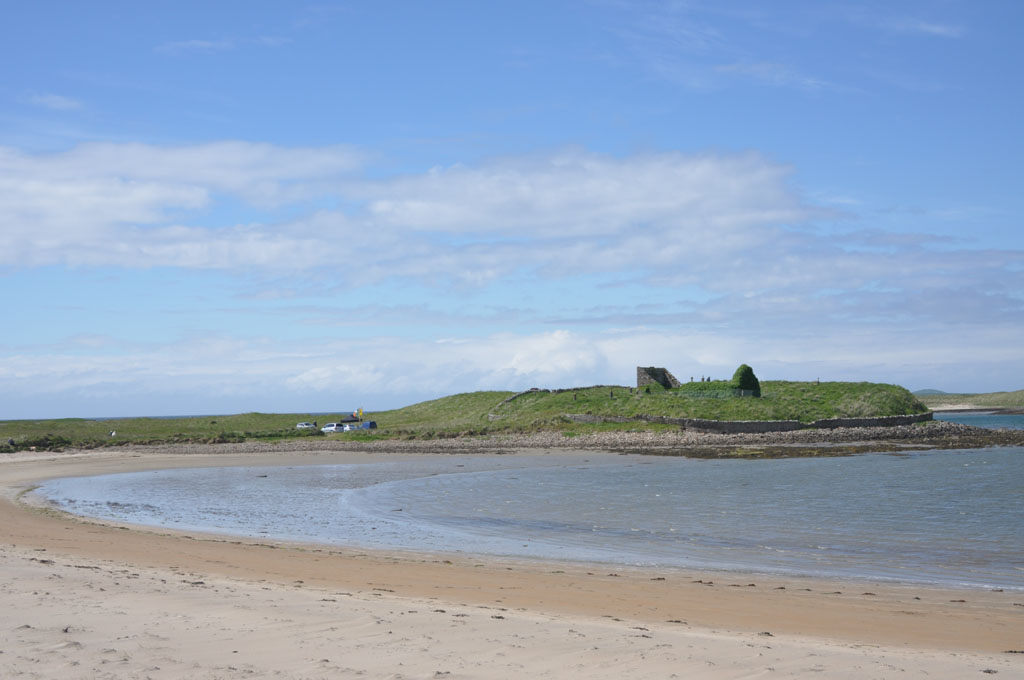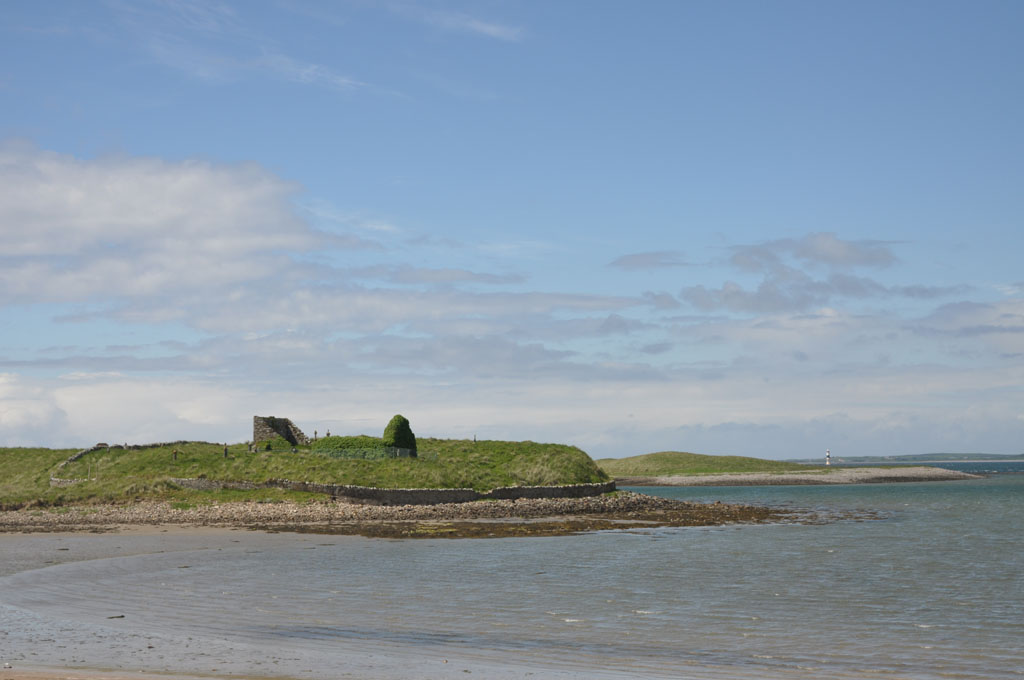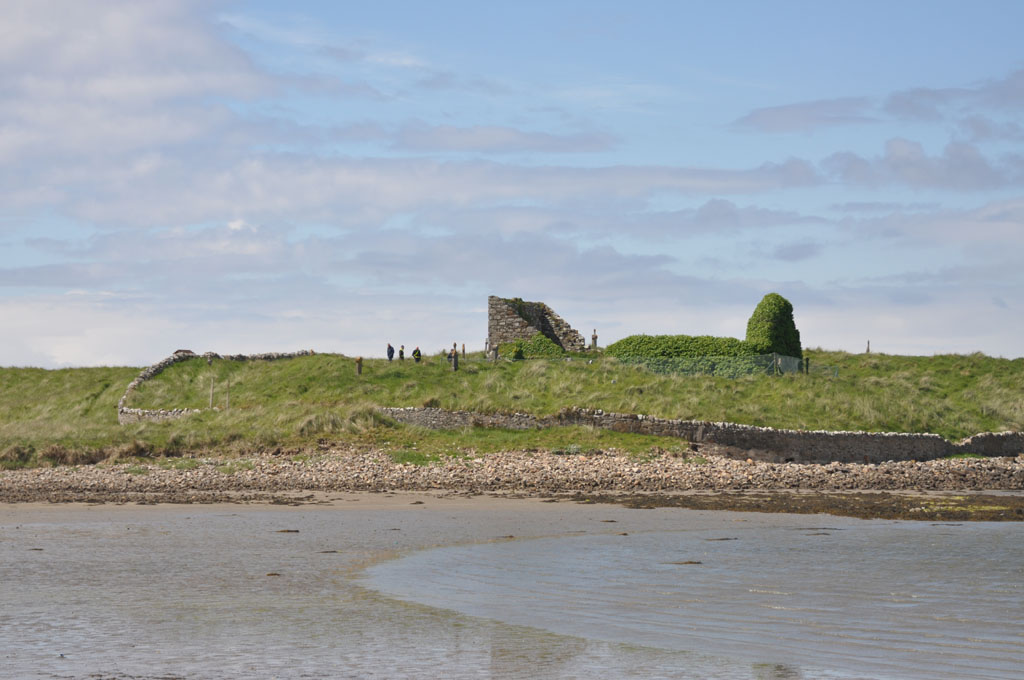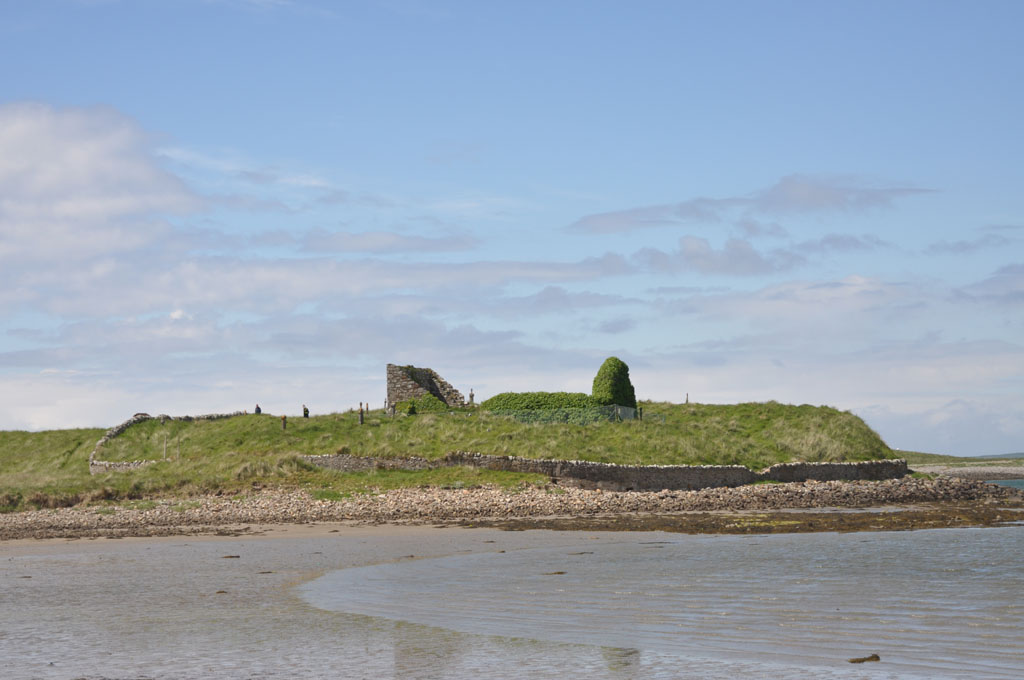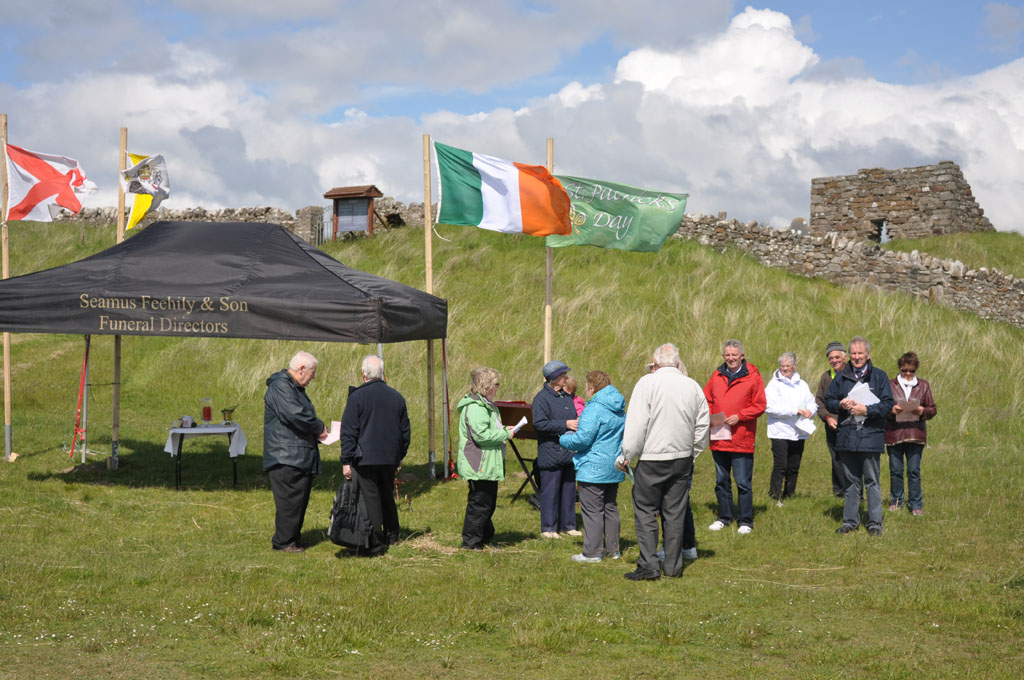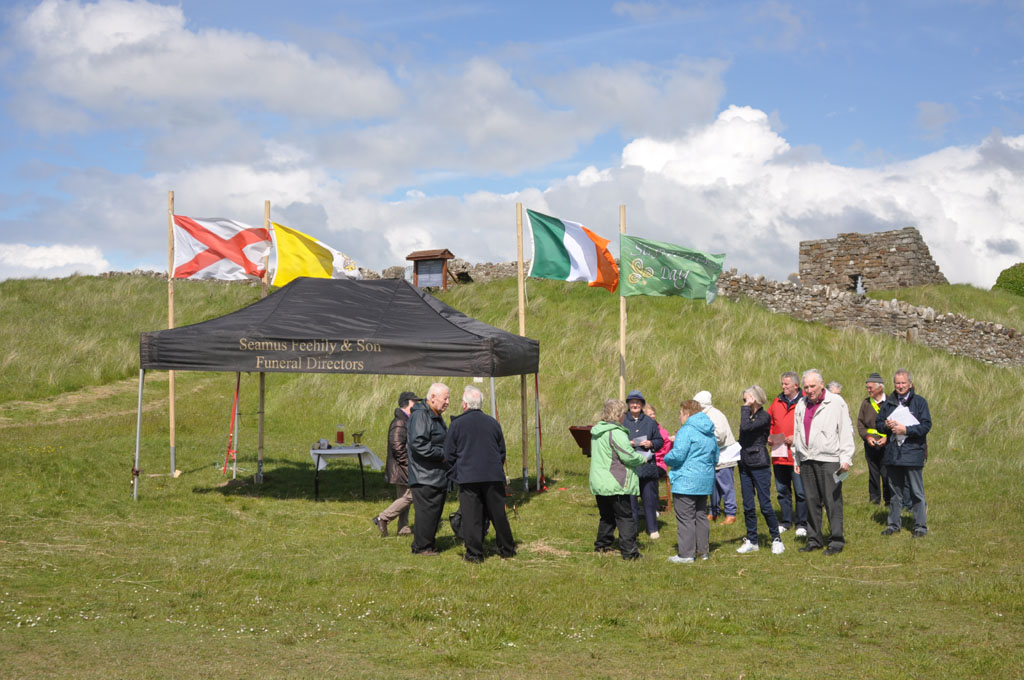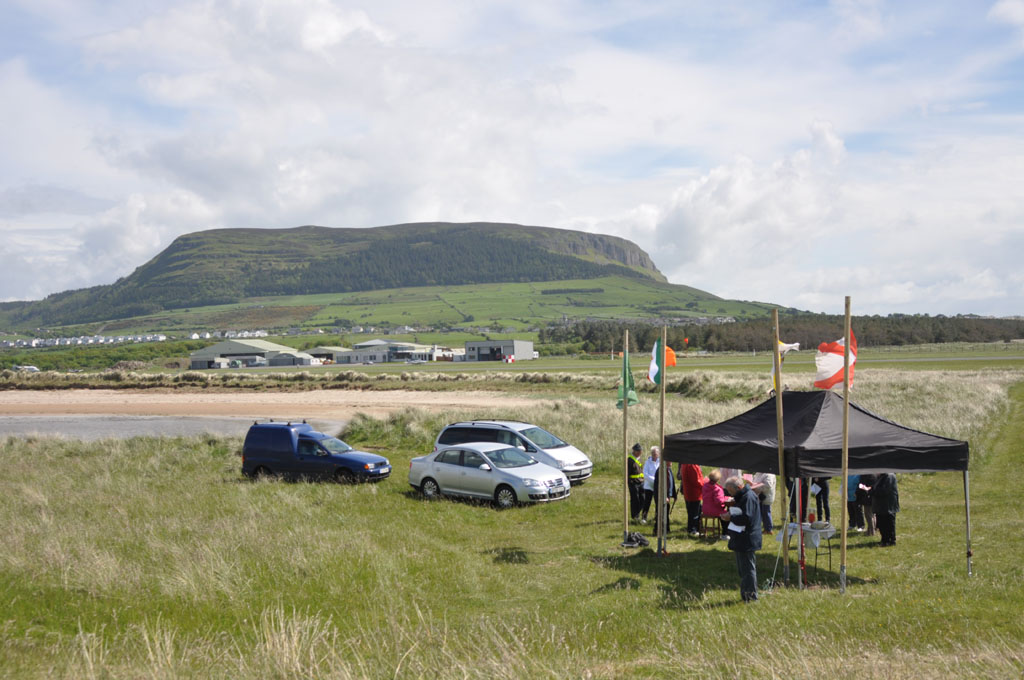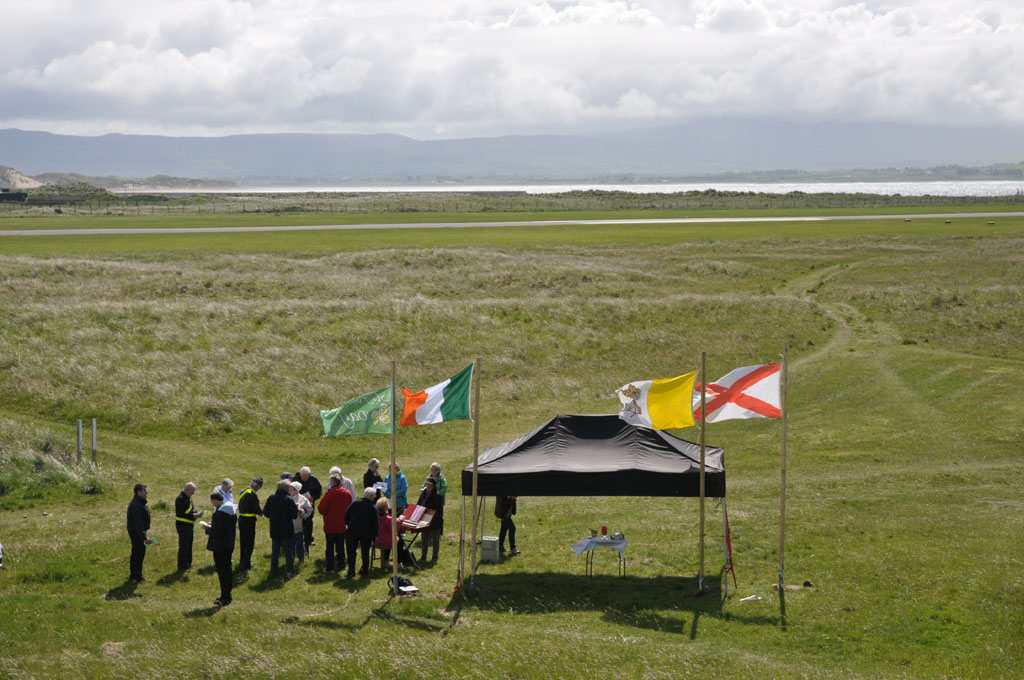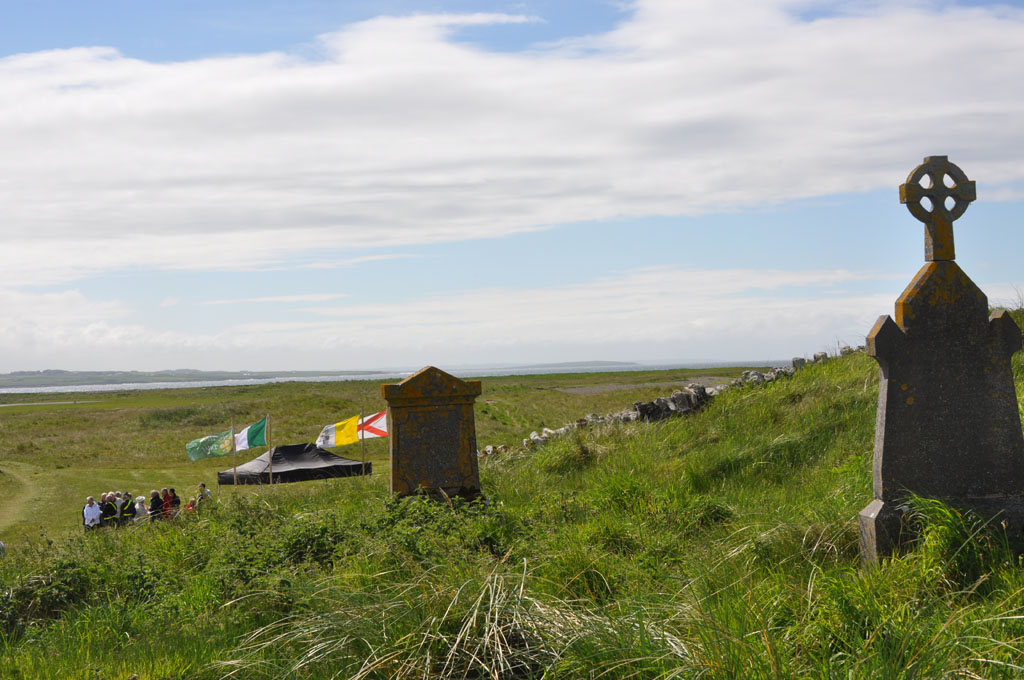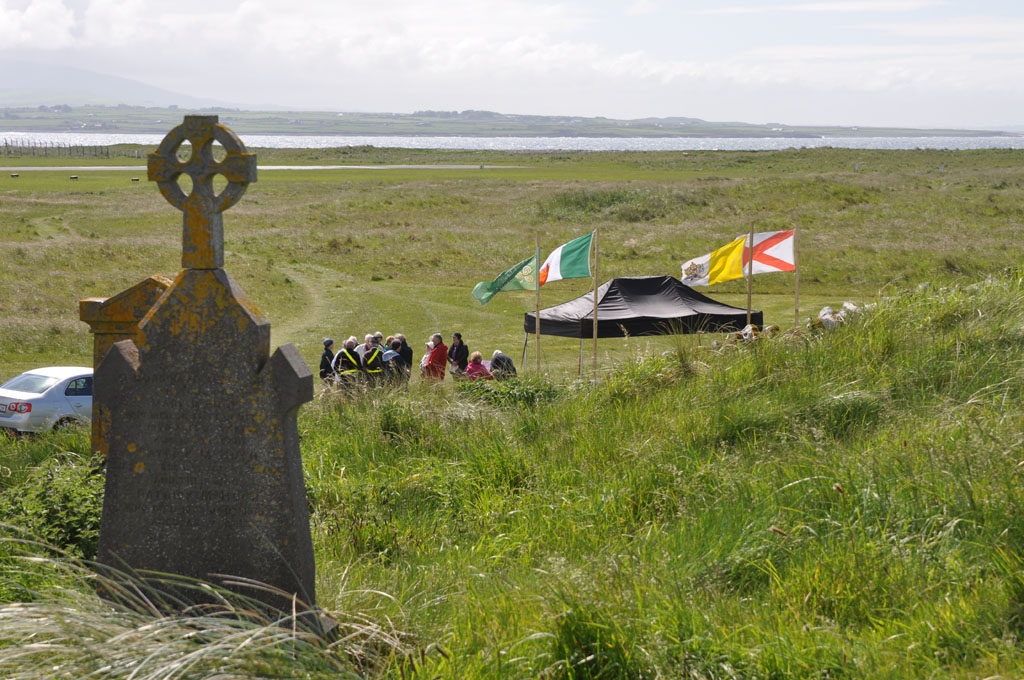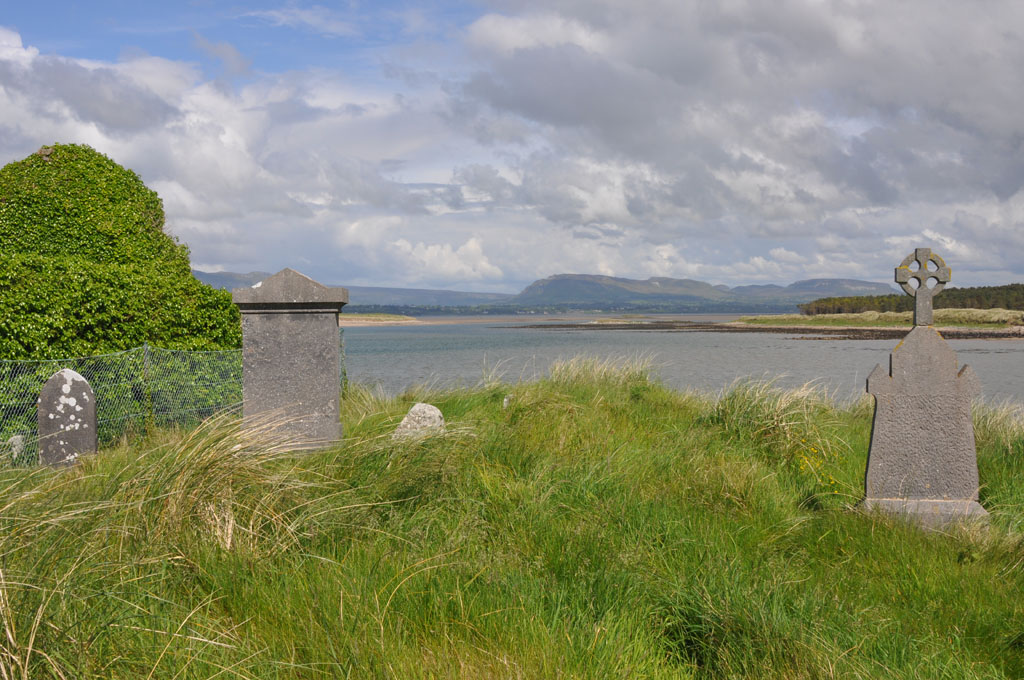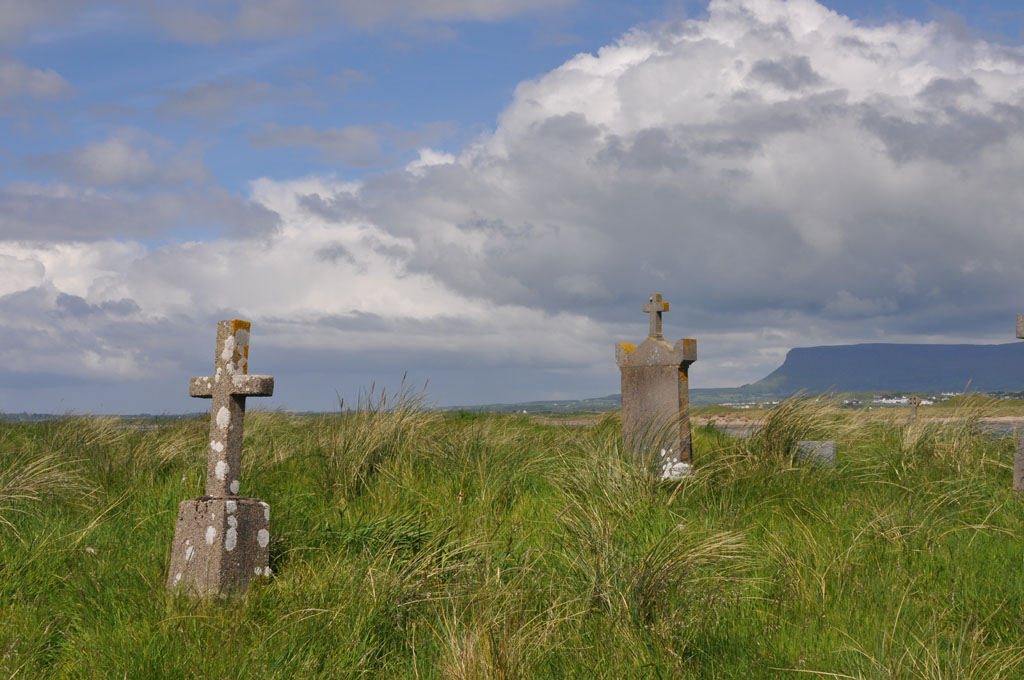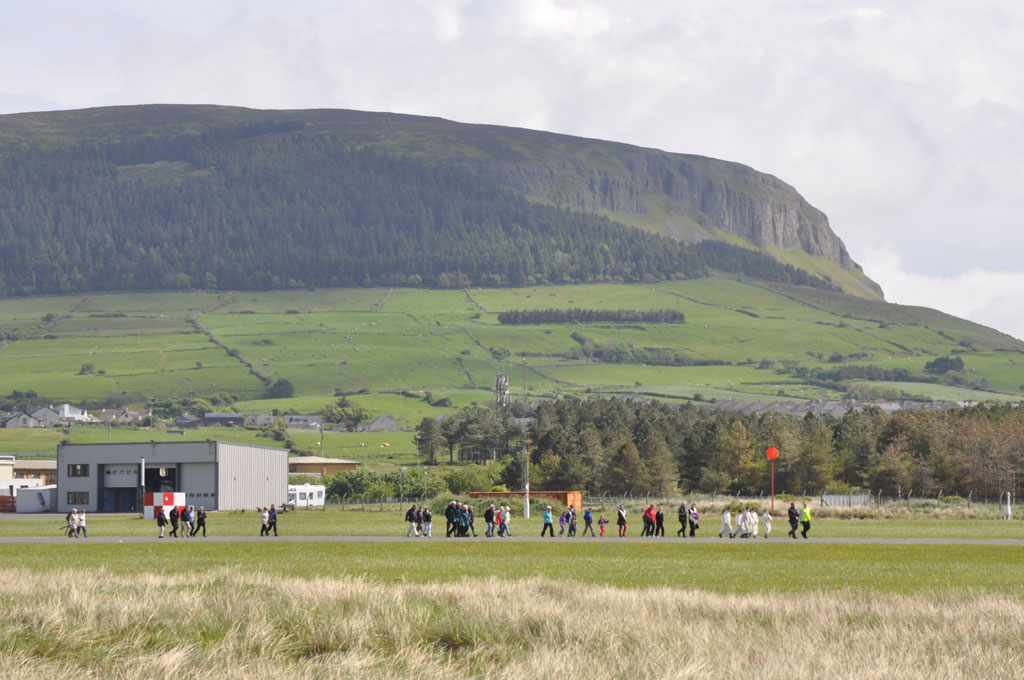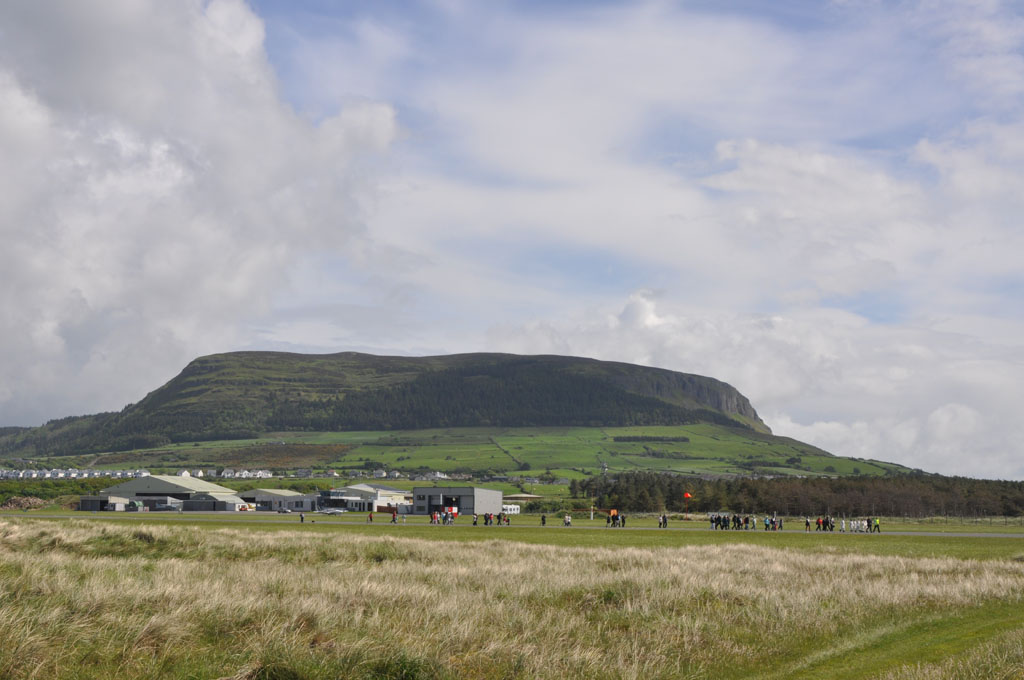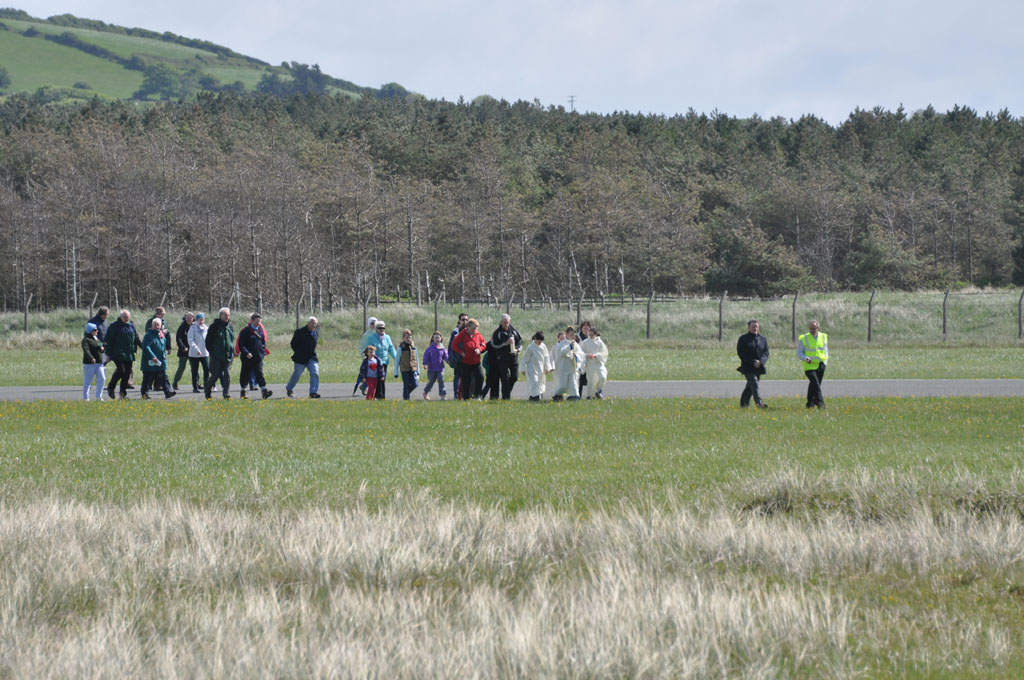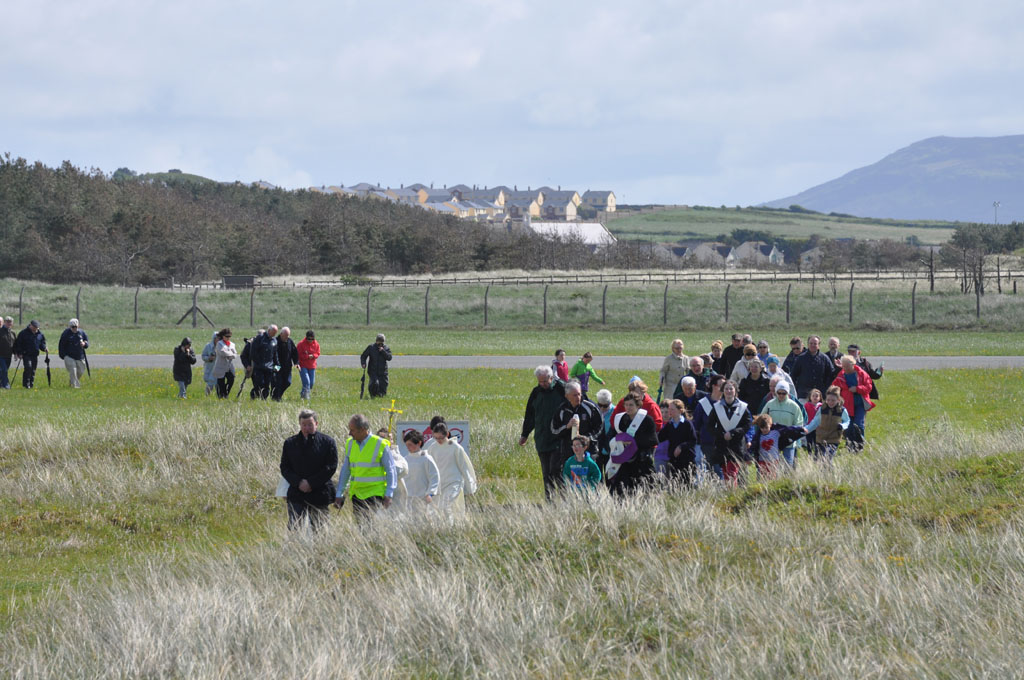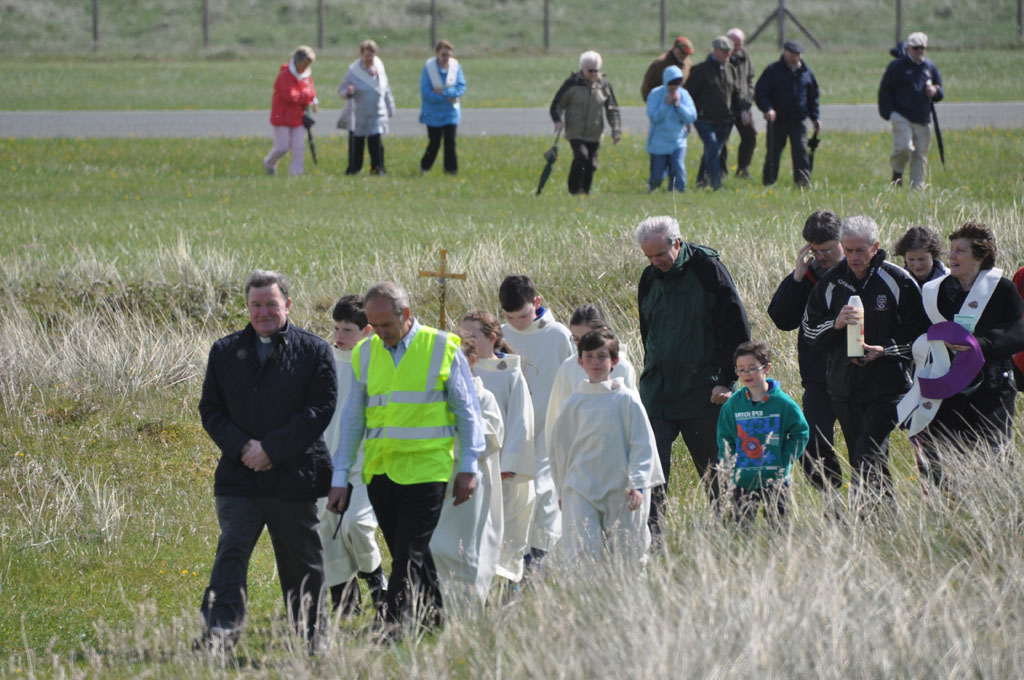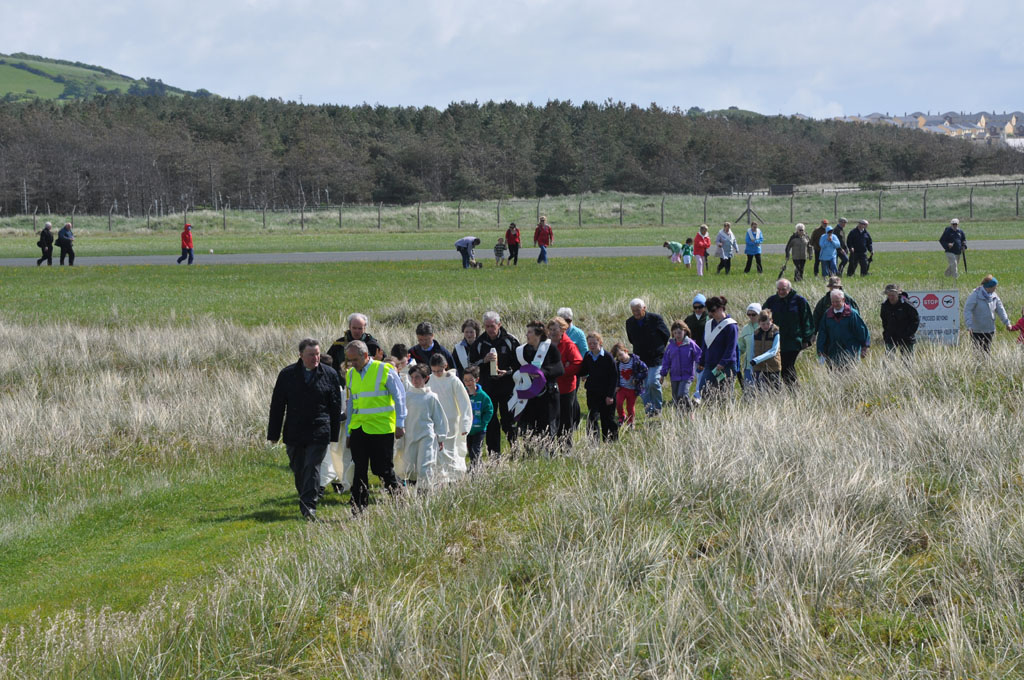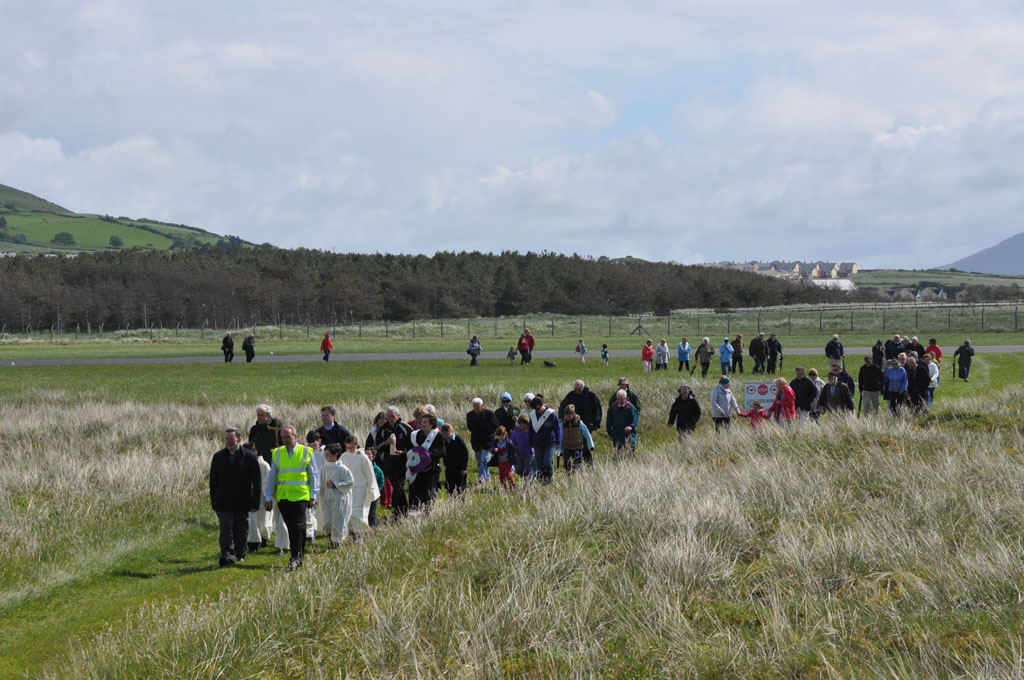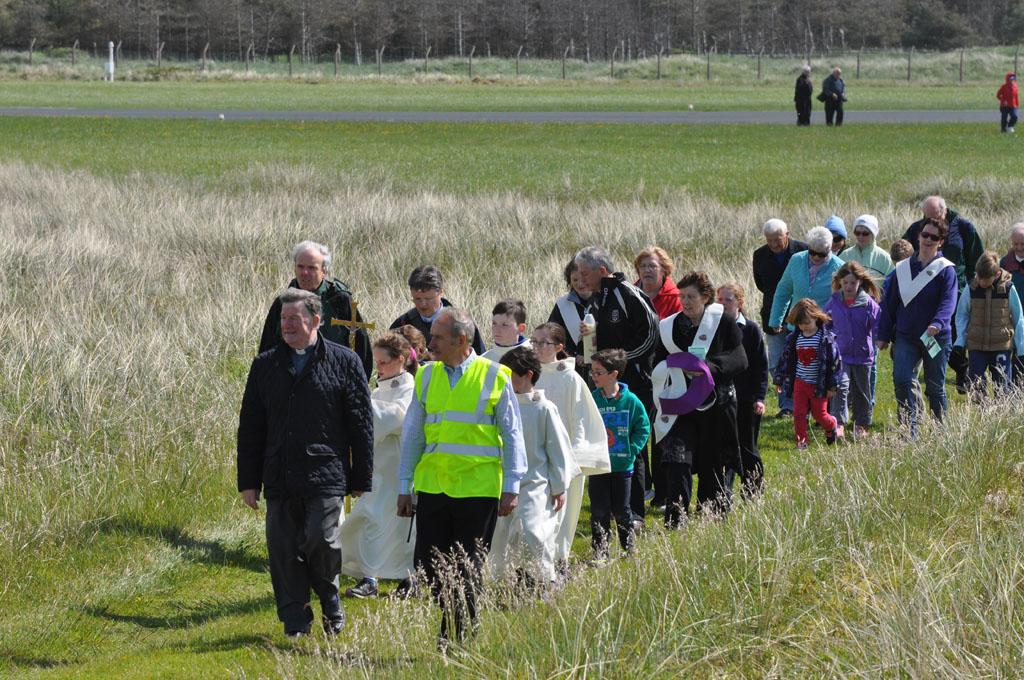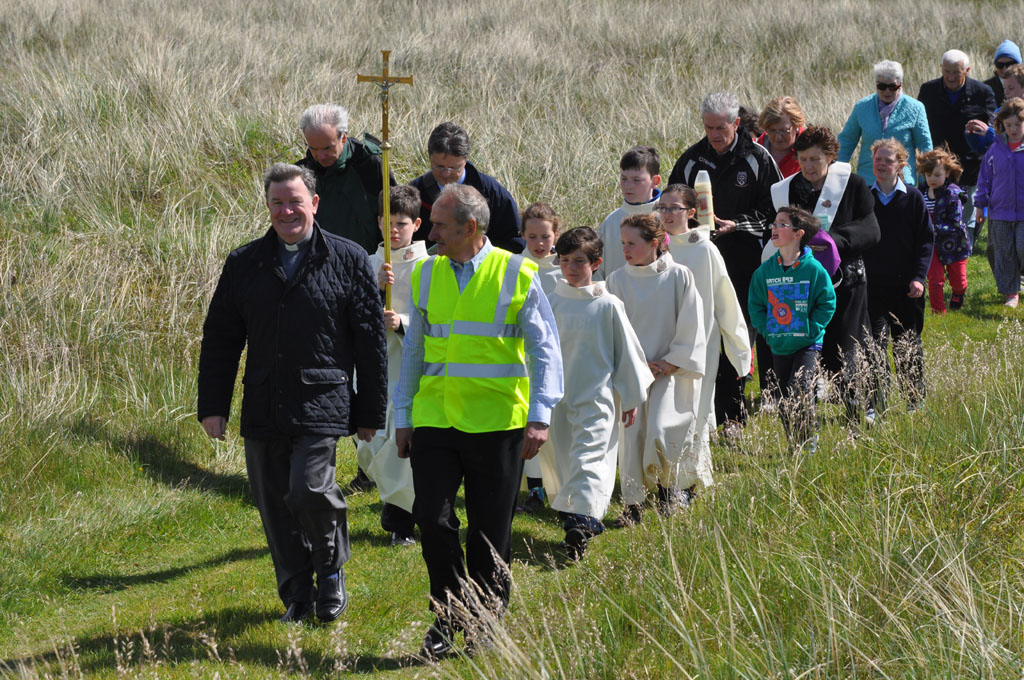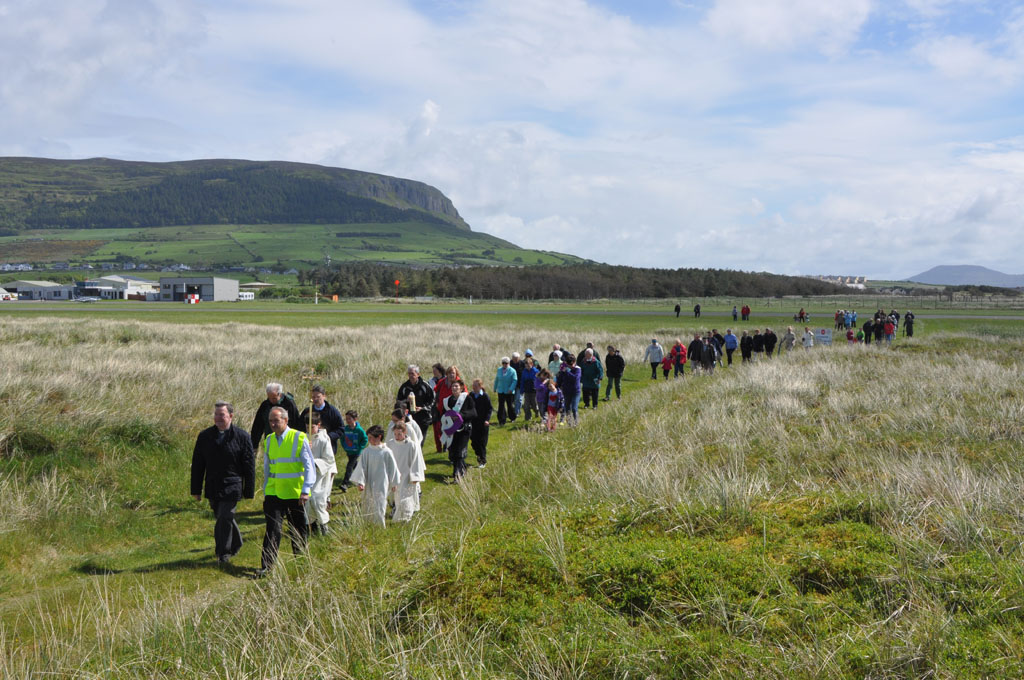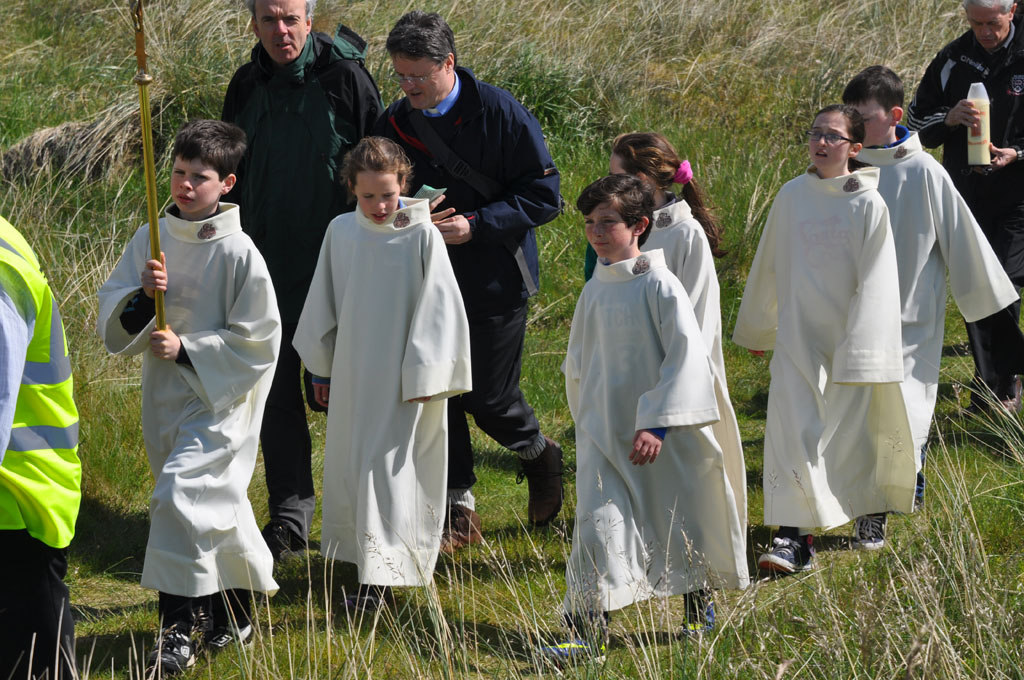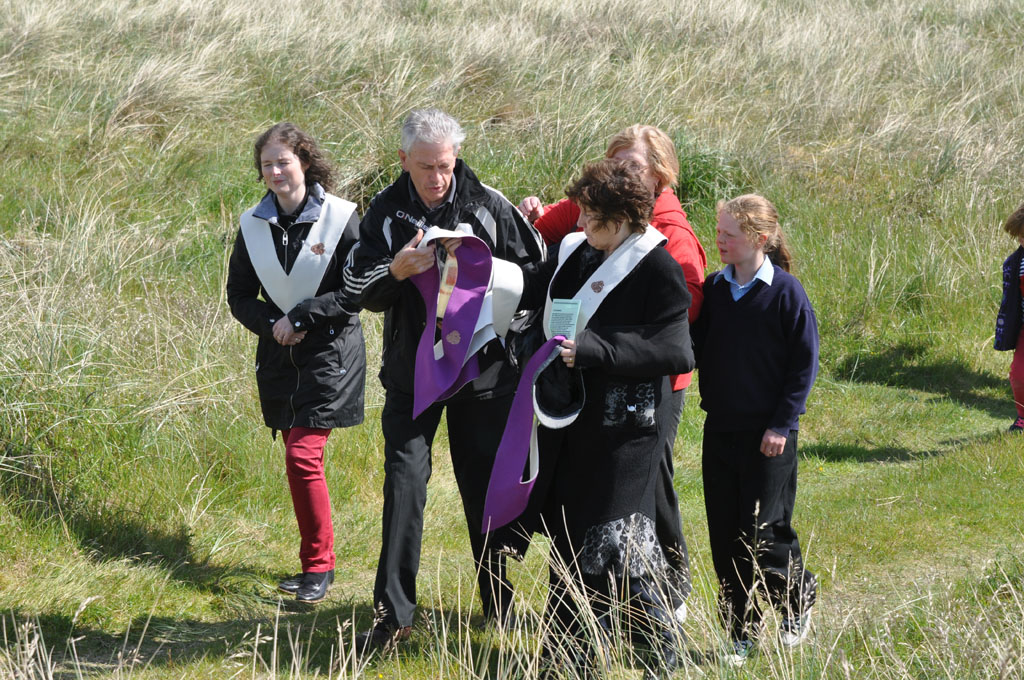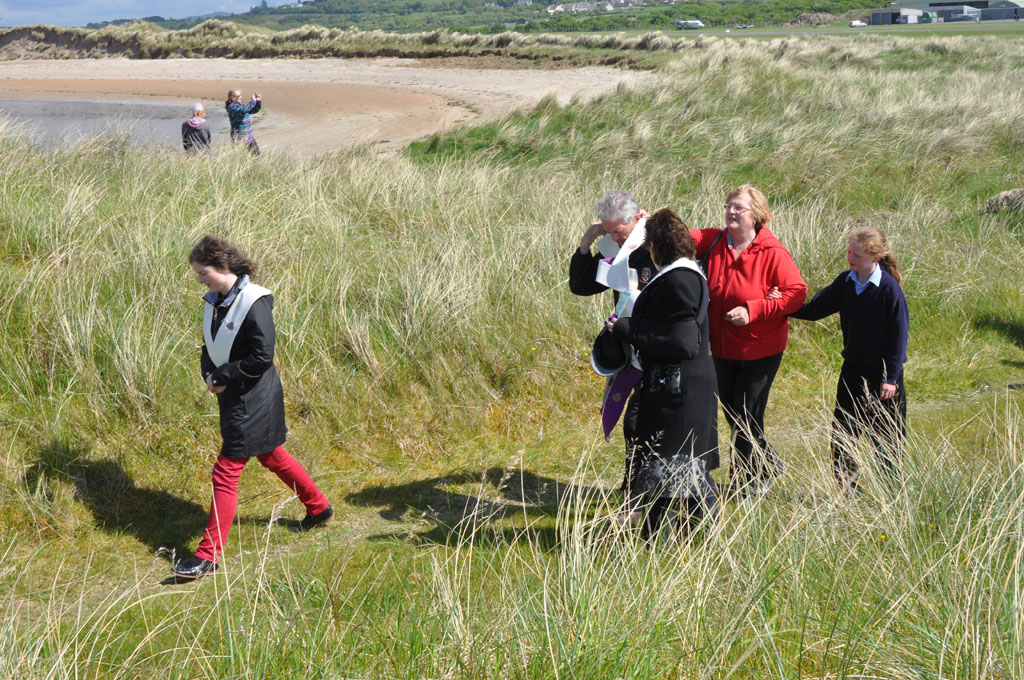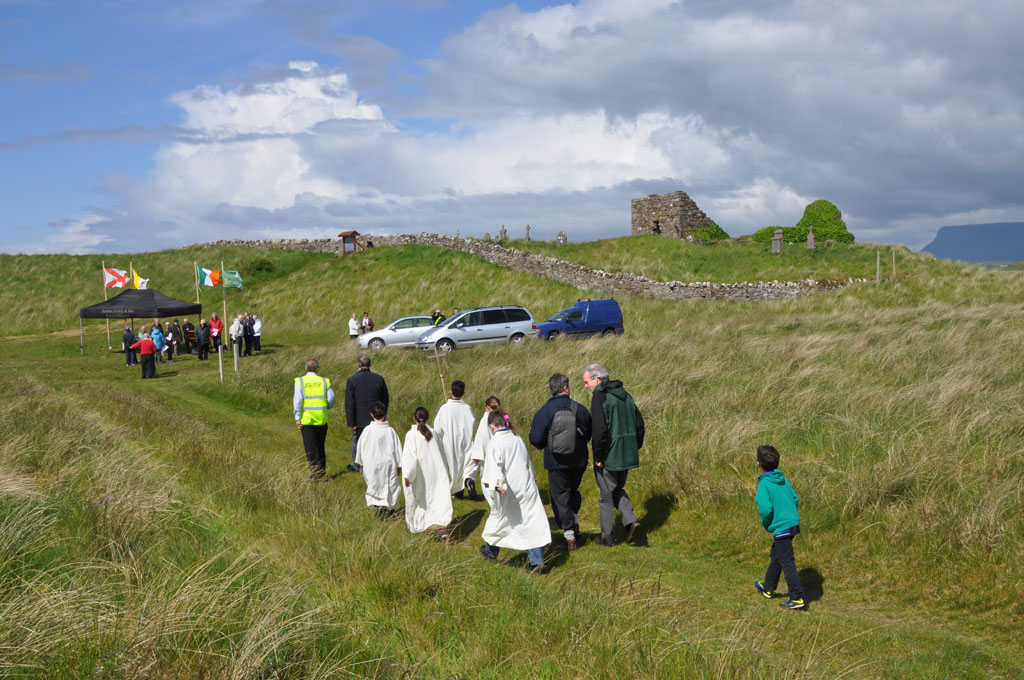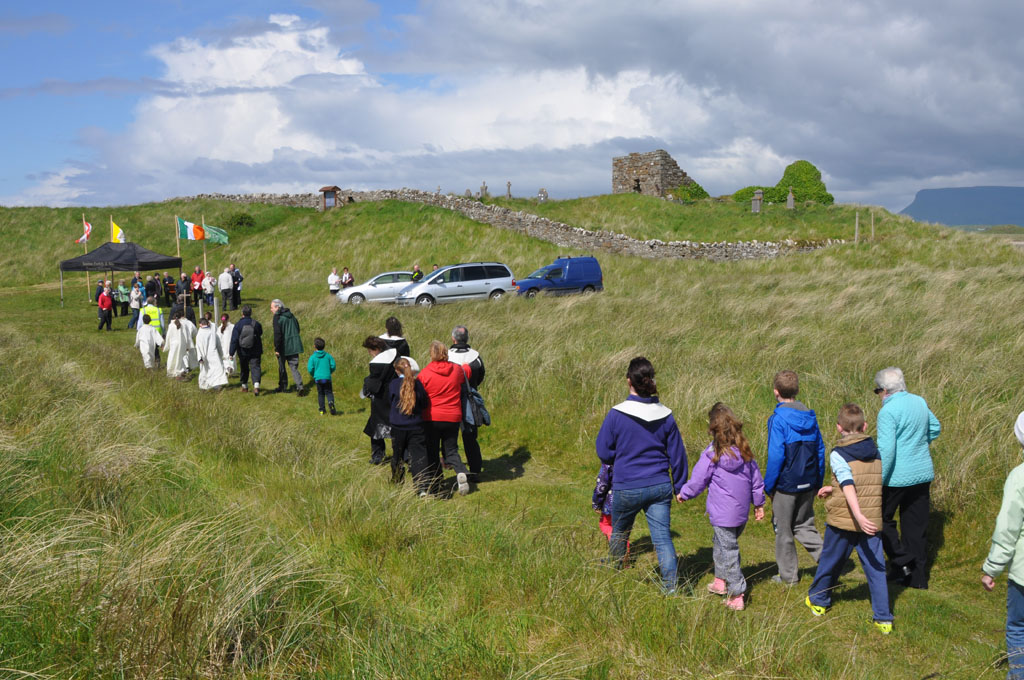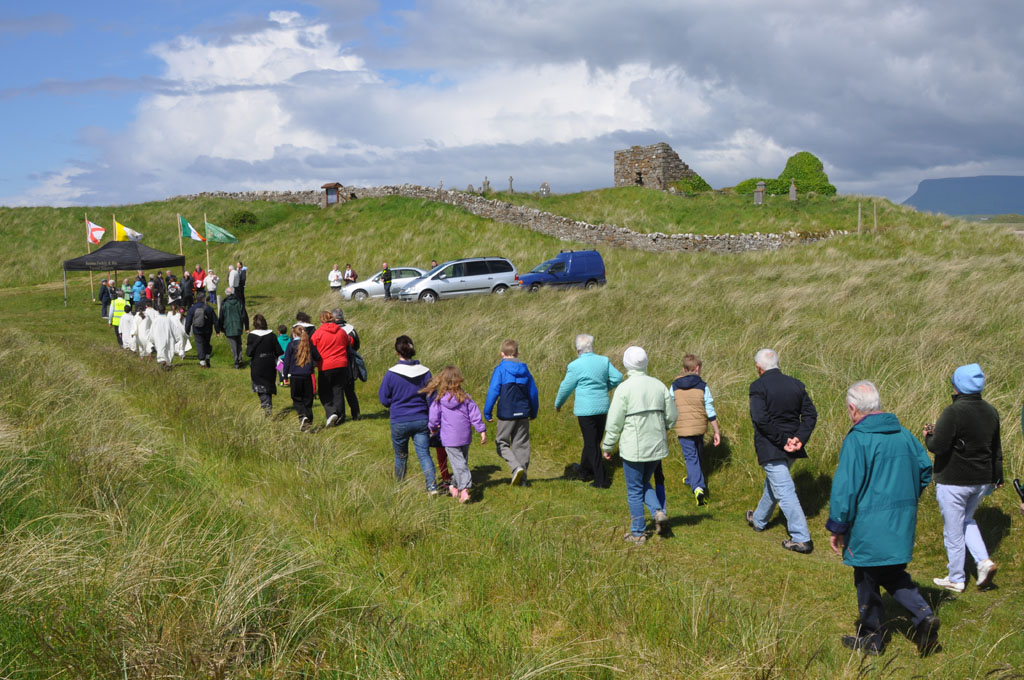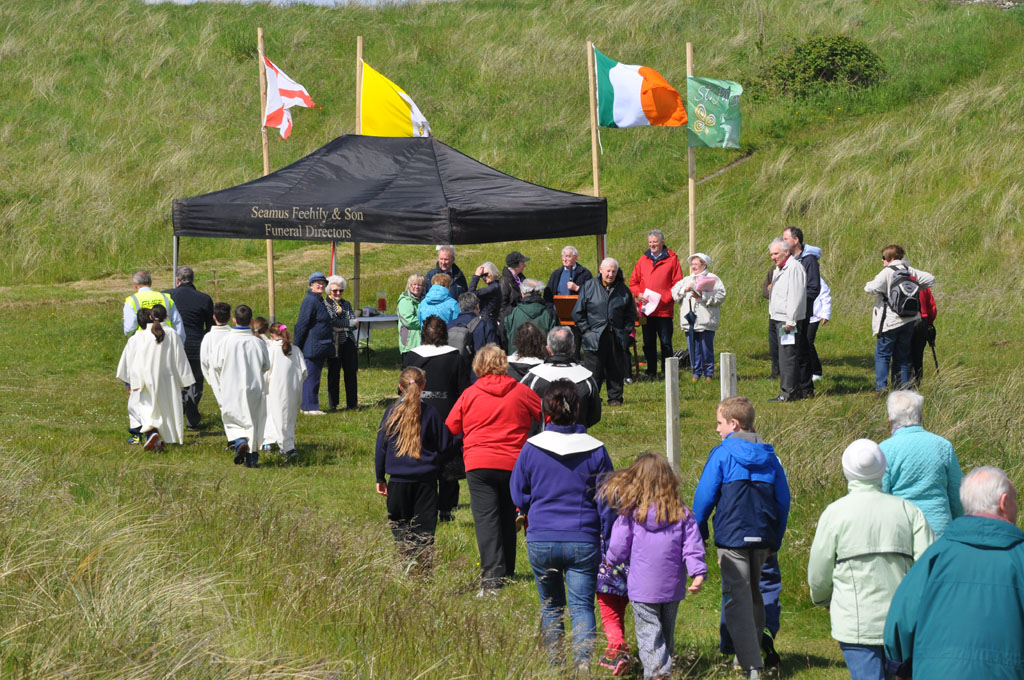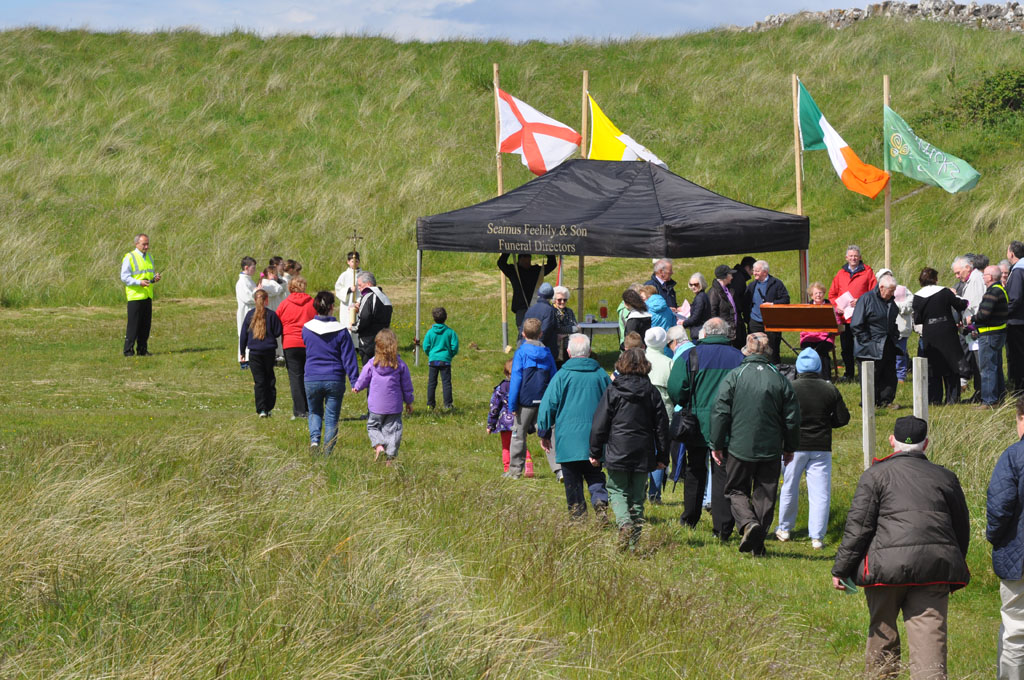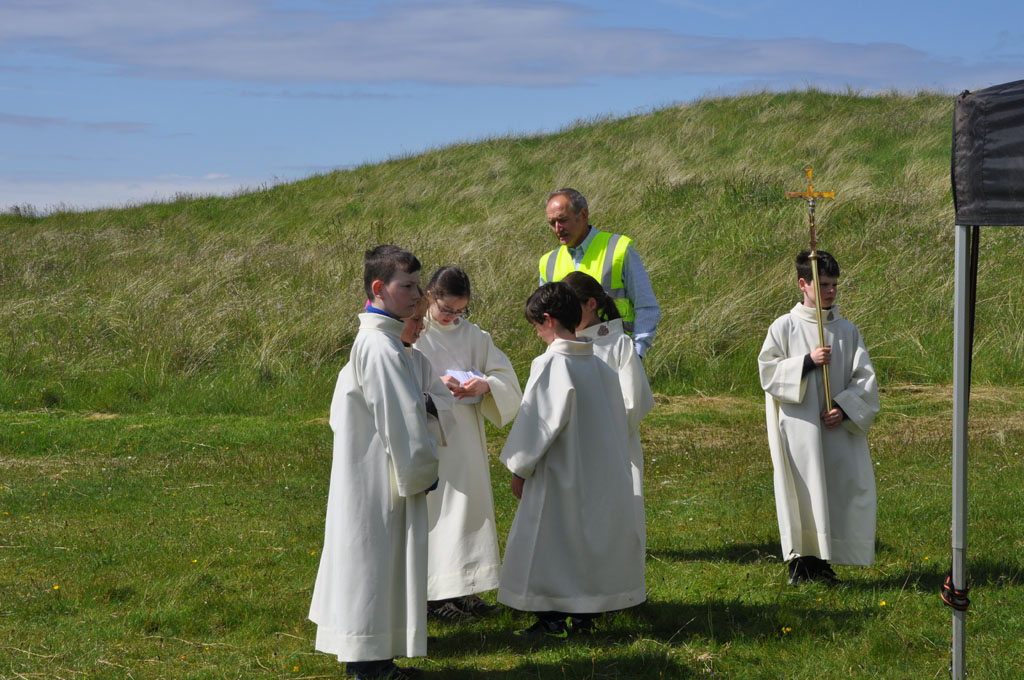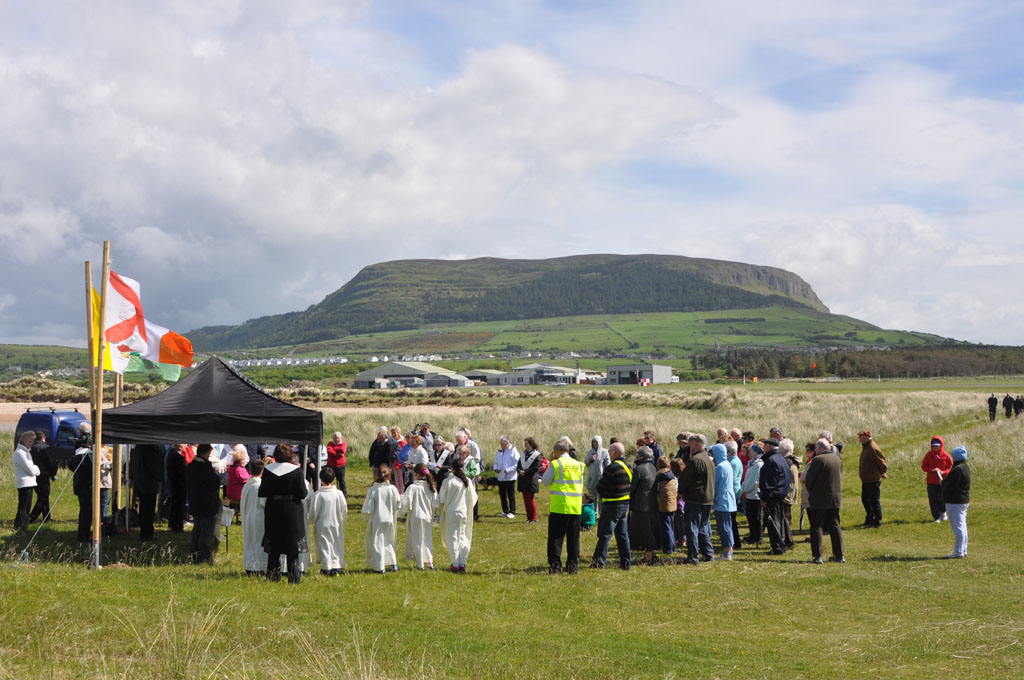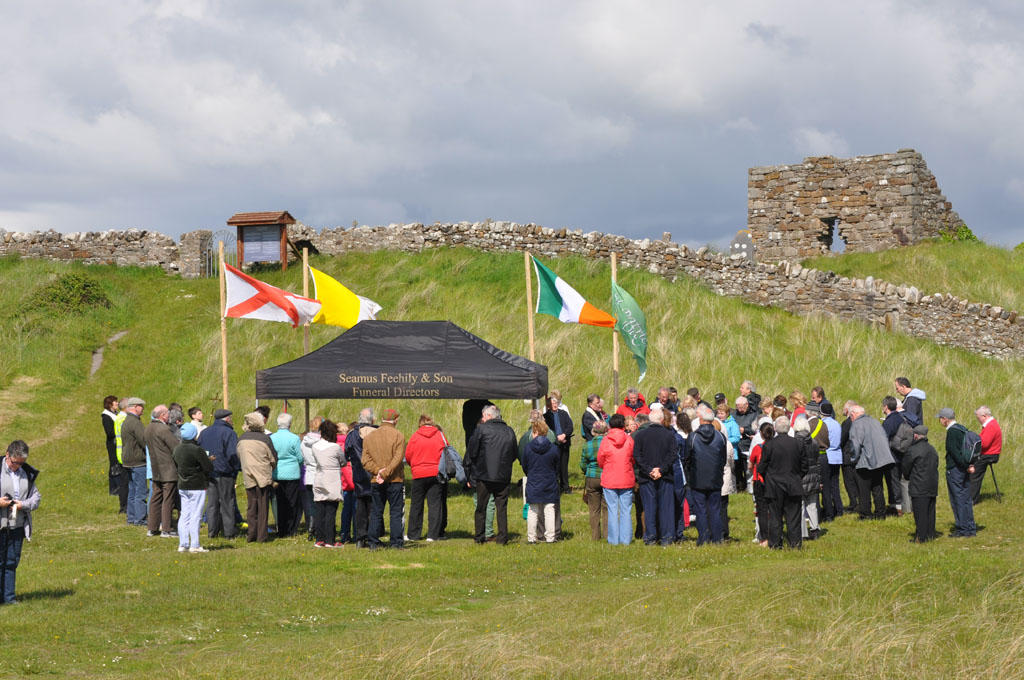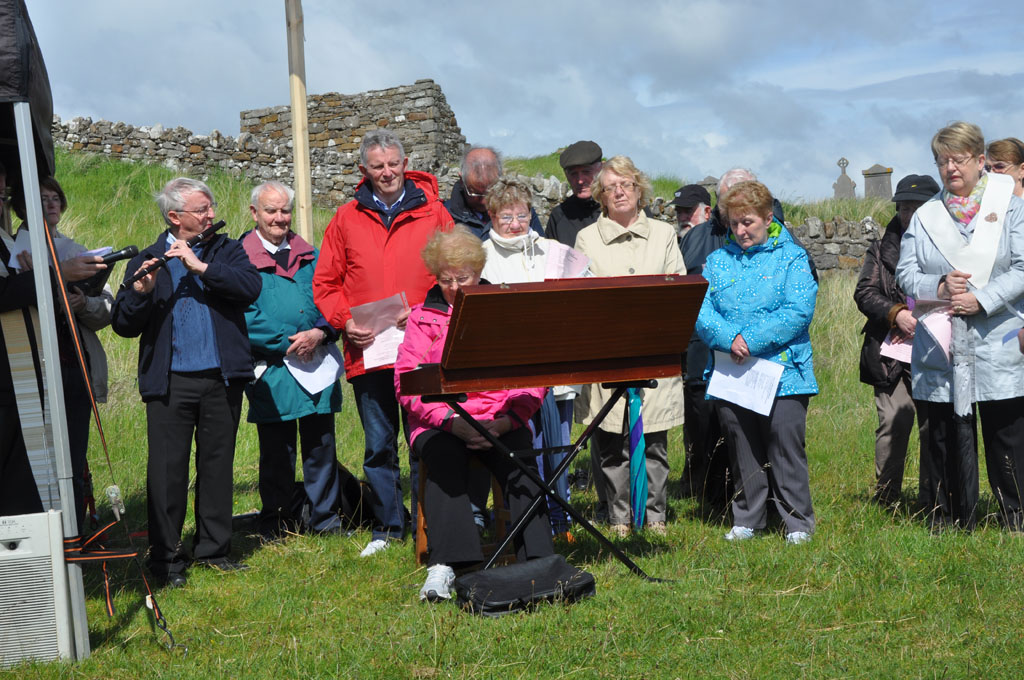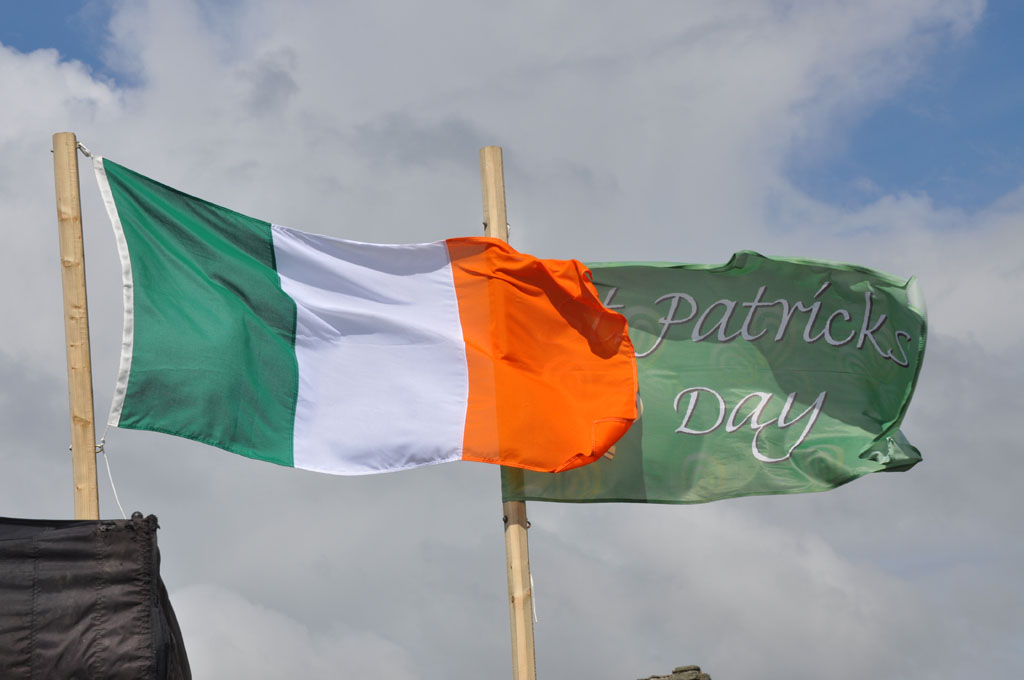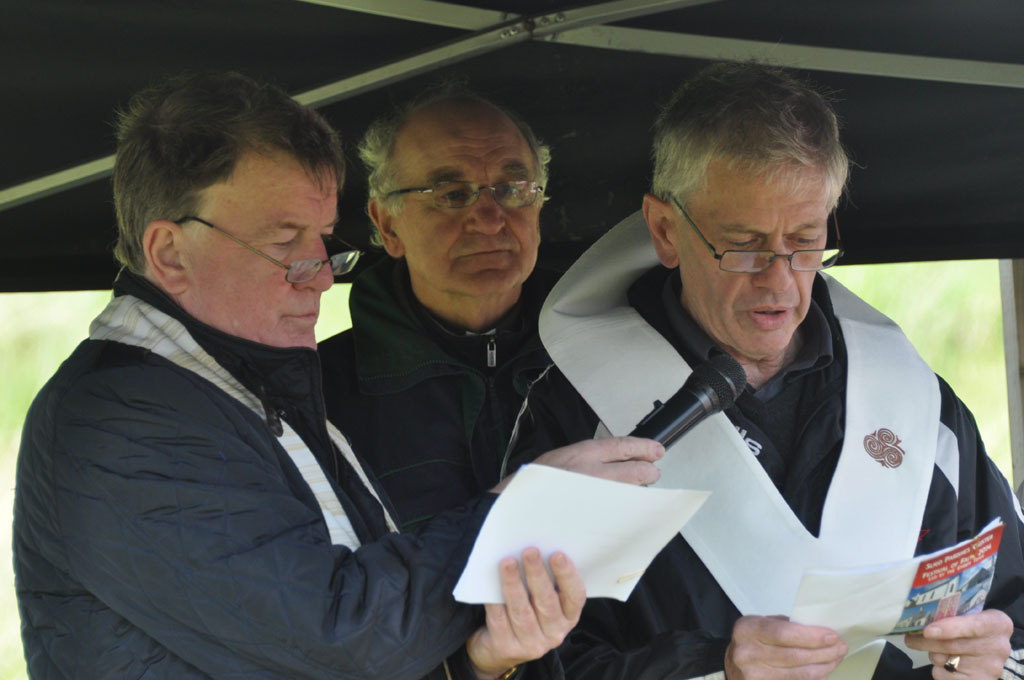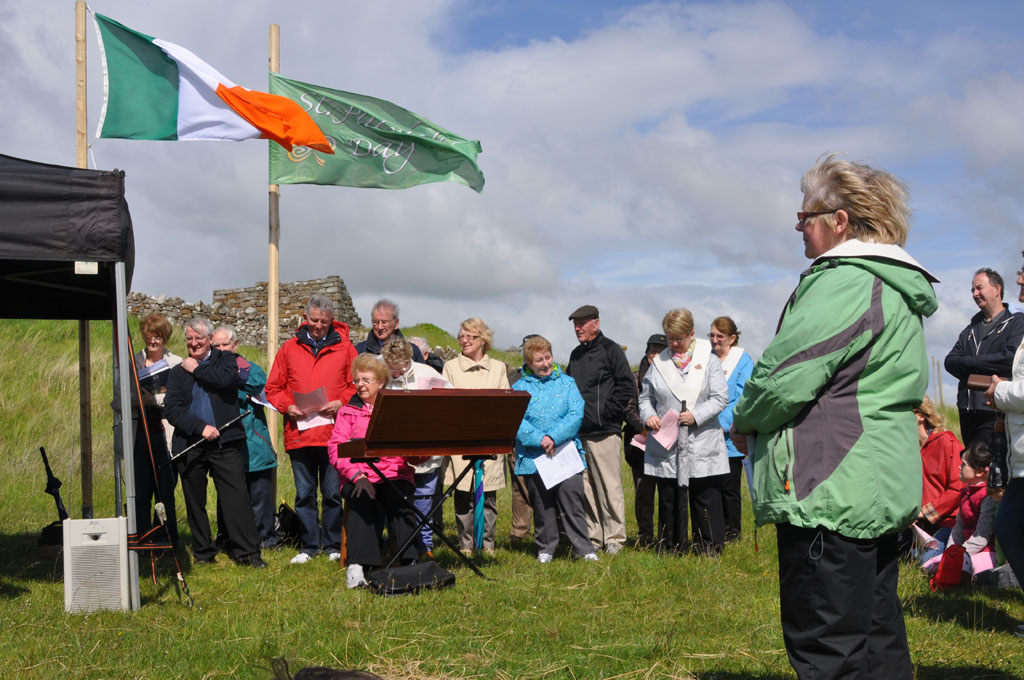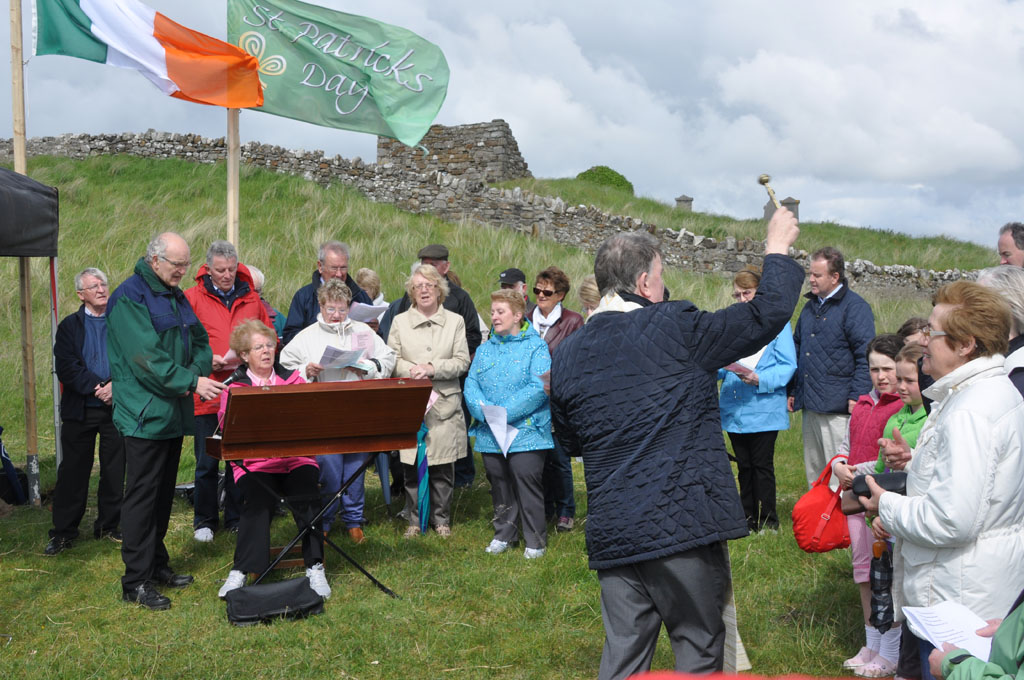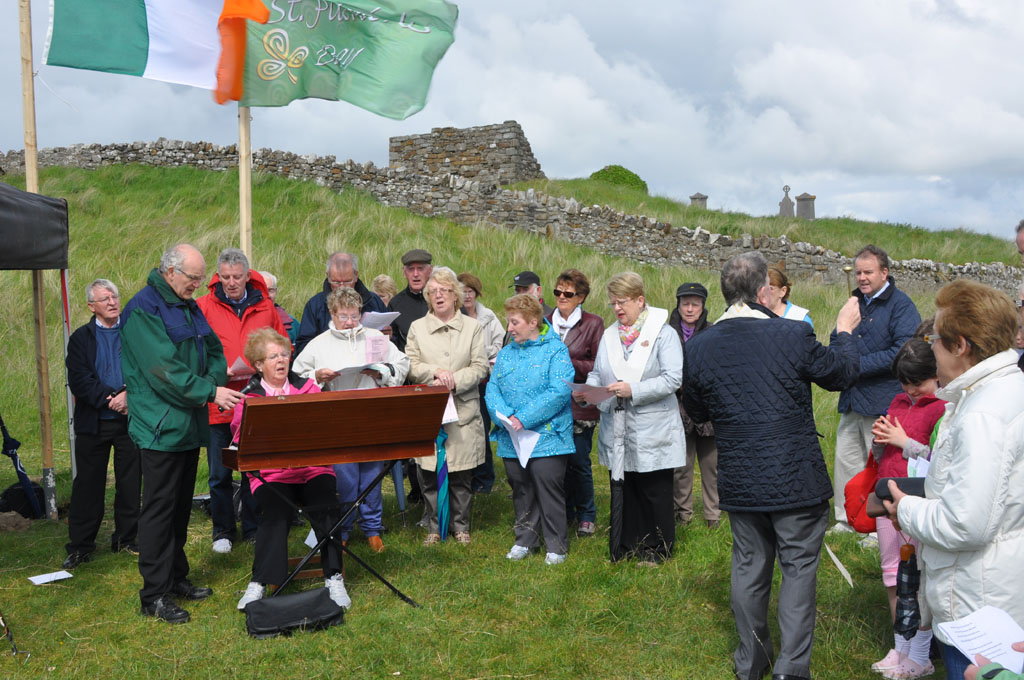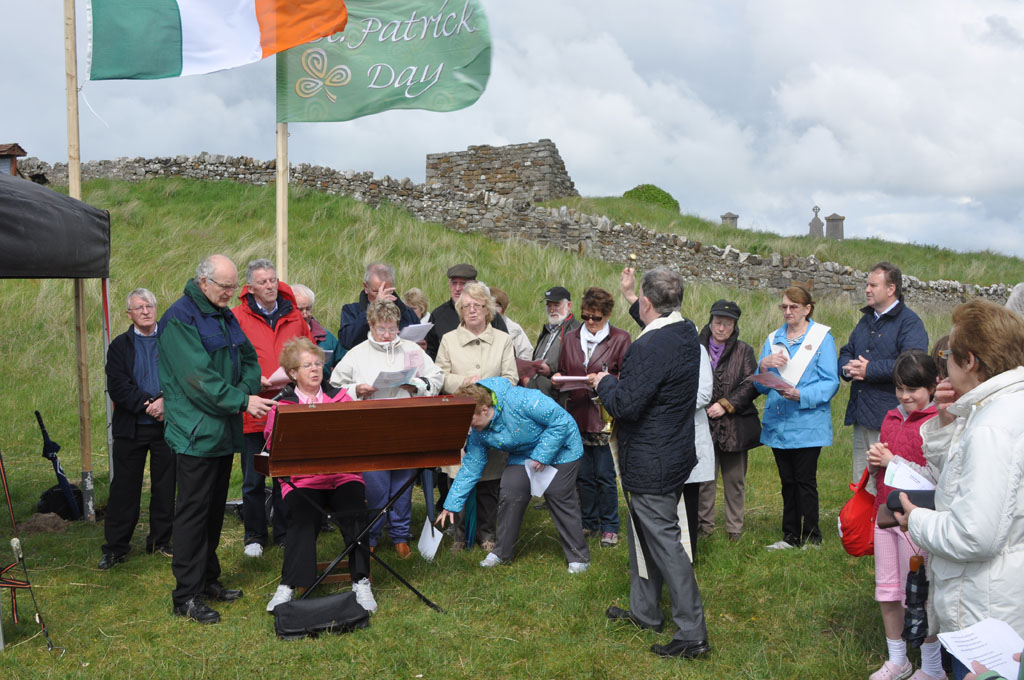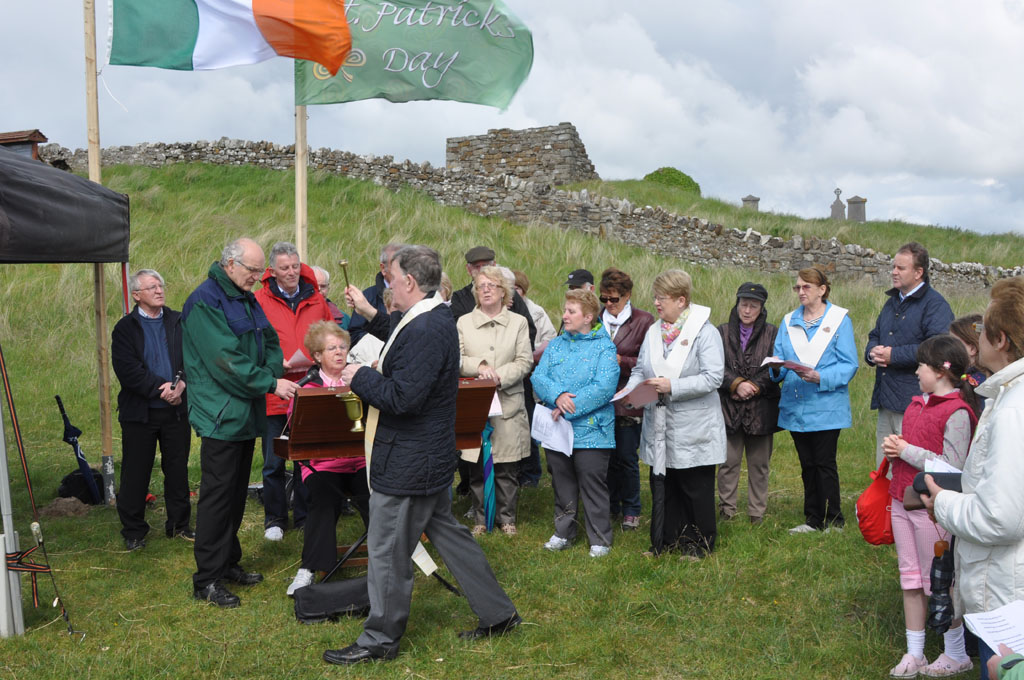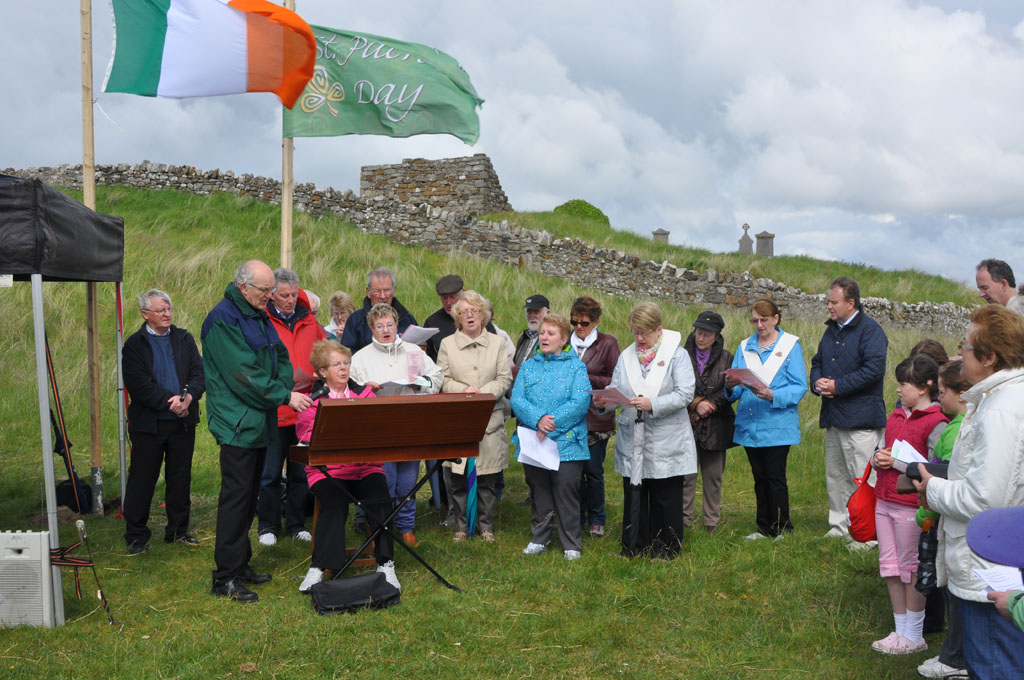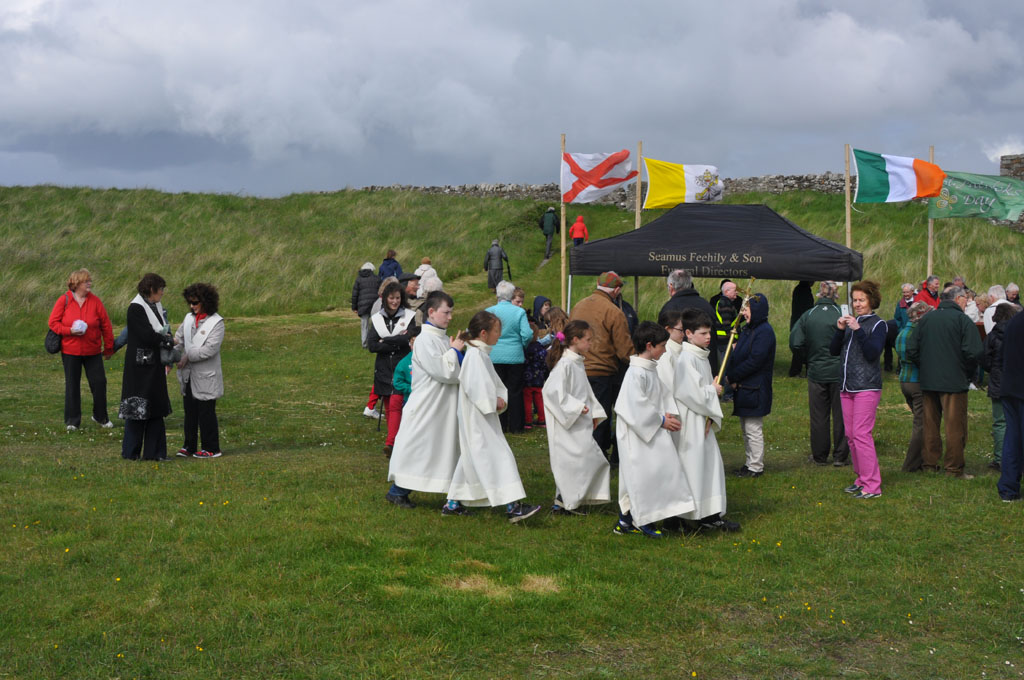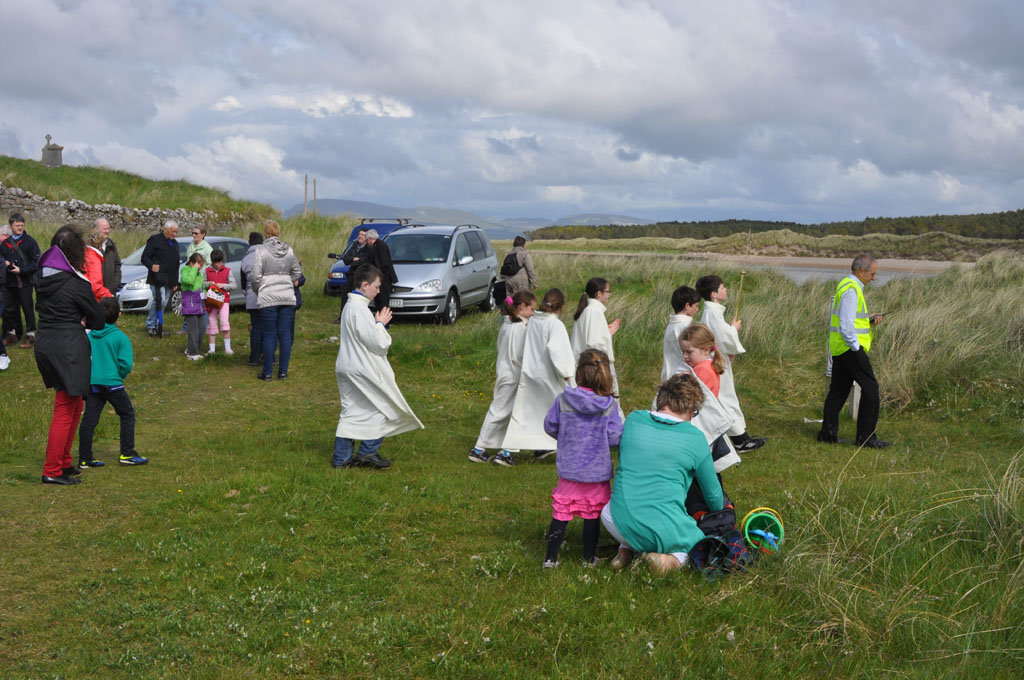Killaspugbrone circa 500AD
Kilaspugbrone church dates back to the period between 1150 and 1220, but the original structure is thought to have been built in the fifth century. The ruins of this ancient church stand on the extremity of the Coolera peninsula and the name in Irish means “the church of the Bishop Brón”. This is a location steeped in history, set against the spectacular backdrops of Ben Bulben and Knocknarea mountains and the Atlantic ocean.
History
Kilaspugbrone was an important Christian settlement, founded in the fifth century by Saint Patrick,
who gave the original 5th century church to his disciple Bishop Bronus.
Bishop Bronus was a native of the Coolera (Strandhill) area and held a special place in the affections of Saint Patrick because he helped propagate the new Christian faith.
On a visit to the church, Saint Patrick reputedly tripped on rough ground and lost a tooth. As a mark of friendship, he gave the tooth to Bronus who enshrined it in the church.
The relic was regarded with reverence, and in 1376 was enshrined in an ornate silver & gold casket for Thomas de Birmingham, Lord of Athenry, who owned the lands of Killaspugbrone.

The Shrine of St Patrick’s tooth
However, the shrine fell into the hands of local chieftains who mistreated it until it was acquired by the Abbot of Cong. The Shrine of St Patrick’s Tooth is now displayed in the National Museum of Ireland in Dublin.
Graveyard
The ruins of this small rectangular shaped church are surrounded by a graveyard that had been used as a multi denominational cemetery right up to the middle of the last century.
Many of the graves do not have gravestones, as people could not afford such a luxury. The majority of graves have “marker stones” to define sites and this was a common practice in graveyards prior to the 16th century.
There is an estimated 700 graves in this one-acre site. There is a marked walking trail from Strandhill out to the church and graveyard.

